Audemars Piguet
We’re All One: The Integrated Bracelet Sports Watch Story
Almost all watch brands now offer a watch with an integrated bracelet, with some creating new lines, others reigniting old designs for the modern buyer, and a good many having such watches as the core of their offer. It’s in this latter category that the kings of such watches dwell, namely Patek Philippe and Audemars Piguet with the Nautilus and Royal Oak, respectively. Both penned by the hand of Gérald Genta, the Royal Oak first launched in 1972 and the Nautilus in 1976. Fast forward 45 years, and the Nautilus is one of the most staggeringly in-demand watches on the planet. The 2021 iteration of the steel 5711 has been given a green dial makeover (very on-trend!), and the retail price is just shy of USD 35,000. At the time of print (July 2021), these watches are trading on the secondary market for over USD 300,000 — if you’re lucky enough to find one. The Royal Oak is similarly in huge demand; even the recently launched Tudor Royal, based on the brand’s 1970s integrated bracelet watches, has a global waiting list for the flagship steel model.

Gerald Genta brought an aesthetic boldness to Audemars Piguet with the first Royal Oak introduced in 1972 .

Genta’s Gems — An Audemars Piguet Royal Oak C-Series ref. 5402 and the Patek Philippe Nautilus from 1976.
The Stalwarts
As mentioned earlier, it would be remiss of me not to mention Gérald Genta when taking a deep dive into this subject. The early ’70s was Genta’s most important era with him designing three of the most iconic integrated bracelet watches ever — the Patek Philippe Nautilus, Audemars Piguet Royal Oak and the IWC Ingenieur. At this point I’ll also mention the Vacheron Constantin 222. Many people miscredit this design to Genta, when it was actually a young Jörg Hysek who penned that particular piece. I have written about Genta before a number of times, but it is the story of him creating the Royal Oak that sticks most in my mind. In the early part of the 1970s, Audemars Piguet, like many other watch brands, was facing huge challenges due to the so-called Quartz Crisis. The brand’s representatives in Italy, however, truly believed there was an opportunity for a high-end premium steel watch. Italian collectors were credited with inventing the art of watch collecting and it seemed that in fact there was a demand. The then-managing director of Audemars Piguet, Mr. Georges Golay, took thedecision to commission the world’s leading watch designer Gérald Genta to dream up the finest stainless steel watch. Rumor has it that he commissioned Genta literally on the eve of the Basel Fair 1970. I like to imagine Genta working through the night, pen in one hand and espresso in the other, just finishing the sketches as the sun rose and then Mr. Golay unveiling the design on the opening morning of the show!
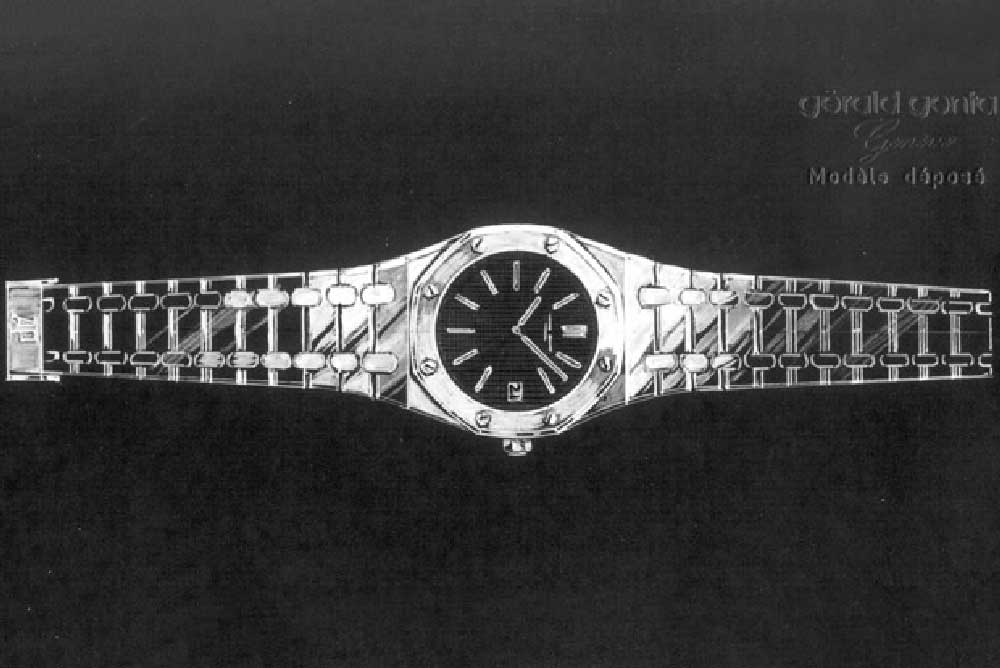
The original Royal Oak sketch made by Gerald Genta
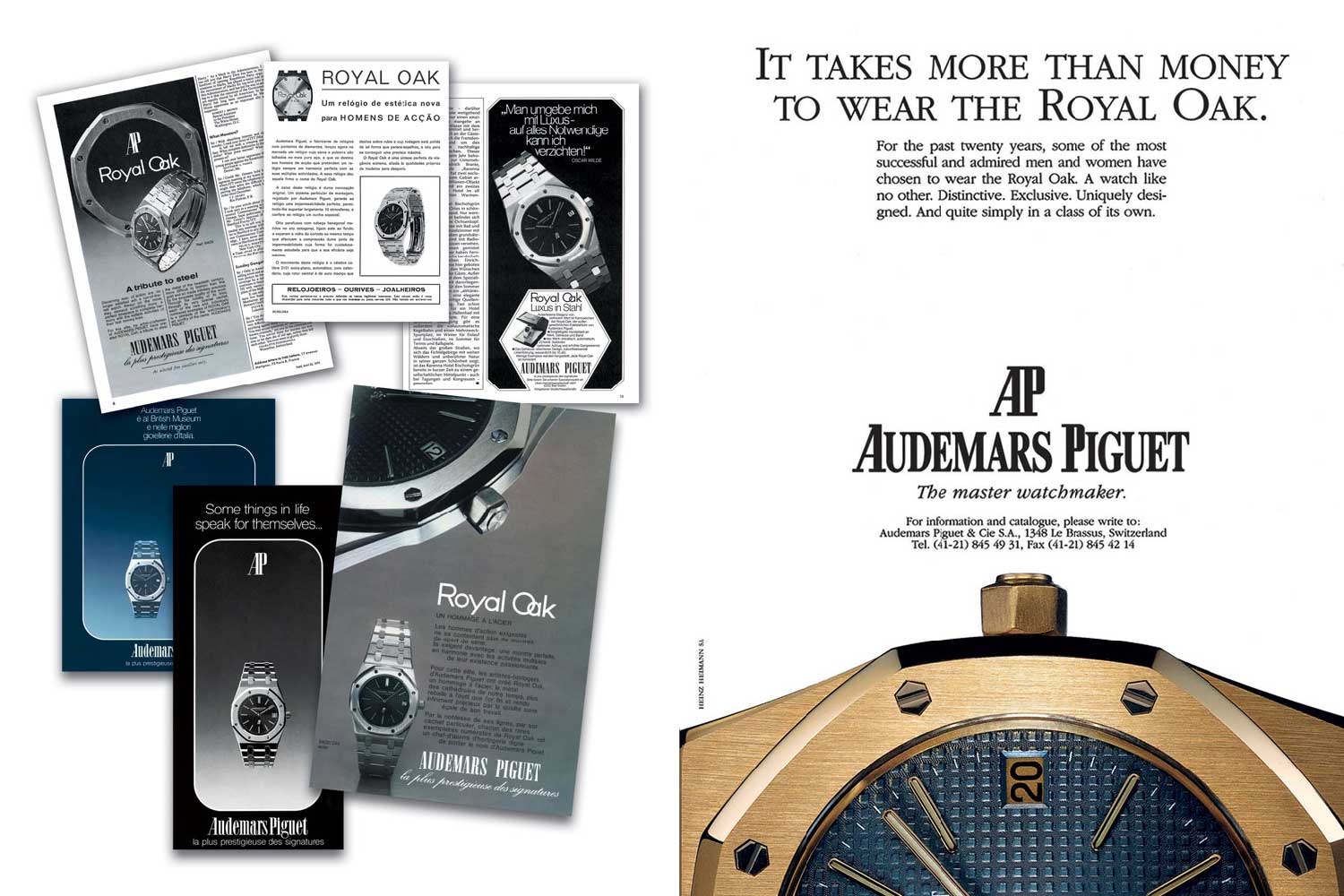
Old advertisements highlighting the exclusivity of the Royal Oak. The Stern-manufactured “petit tapisserie” dial and the integrated bracelet became the iconic elements of the watch which was marketed at CHF 3,300 in 1972.
In 1976, Patek Philippe launched the other watch which Genta famously designed, the Nautilus. It seems that Genta was not a man who spent weeks and months agonizing about the designs of his watches, certainly when it came to his most famous duo, at least. Again, the story of the design of the Nautilus was that it was decisive and done in a few minutes on a napkin. In Genta’s own words, “I was at the restaurant of a hotel, and some people from Patek were sitting in one corner of the dining hall while I was sitting alone in the other corner. I told the head waiter: ‘Bring me a piece of paper and a pencil, I want to design something.’ And I designed the Nautilus while observing the people from Patek eating! It was a sketch that I completed in five minutes…” The watch that launched in 1976 was reference 3700/1A, aka the Jumbo, in steel. The watch measures a hefty 42mm at a time when many brands were still aiming for slimmer, more discreet watches. It was truly fit for purpose as a sports watch, being waterproof to 120 meters and rugged in construction, and yet supremely comfortable due to its integrated bracelet with supple links that wore beautifully on the wrist. In line with Genta’s penchant for maritime cues as seen on the Royal Oak, the Nautilus’ case construction was inspired by the locking mechanisms on the portholes of ocean liners. The two-piece construction was made watertight by the eight-sided bezel secured to the case by a hinged system that was tightened using four lateral screws.
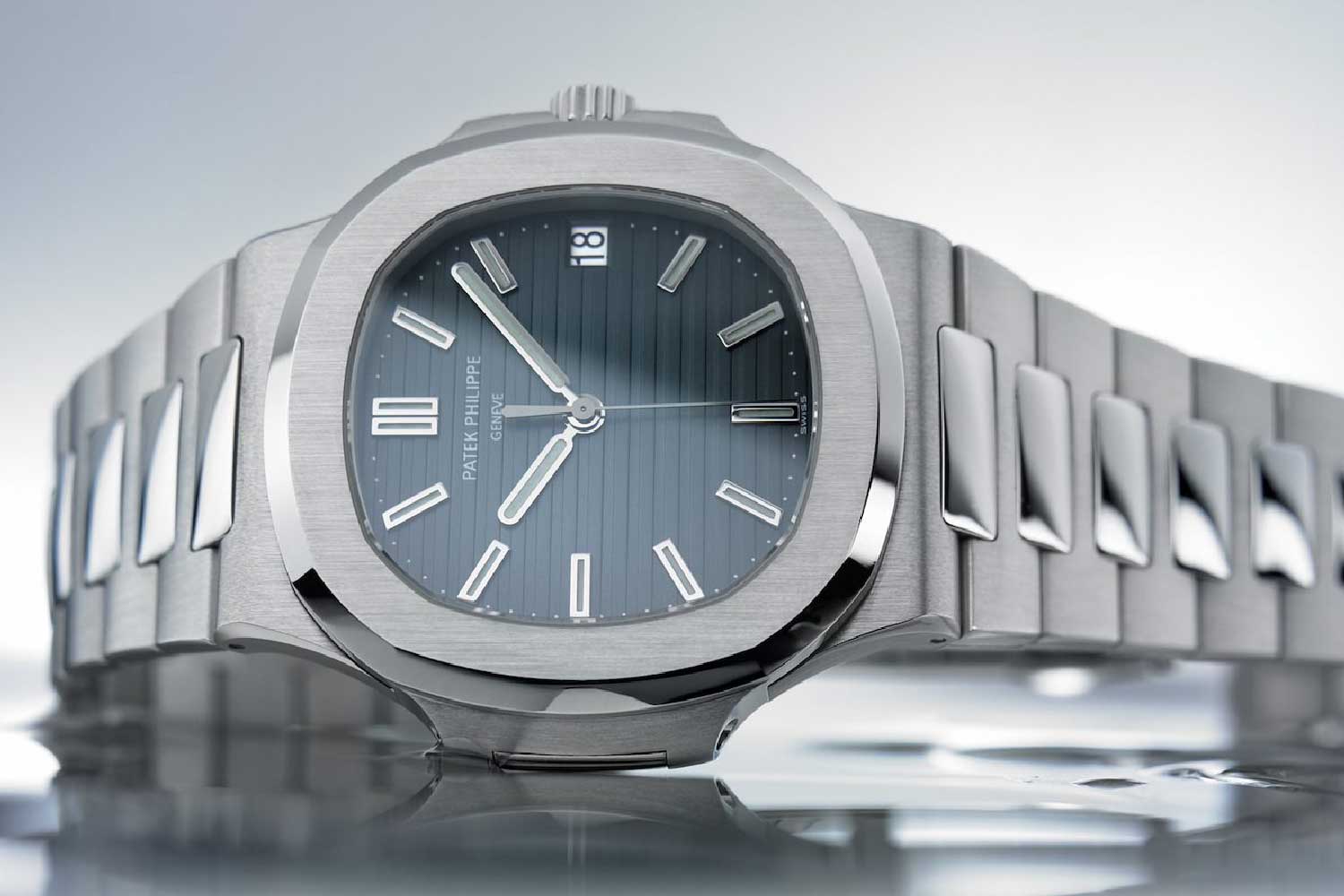
The Nautilus had its dial manufactured by Stern,the movement based on the Jaeger-LeCoultre super slim caliber 920, and the bracelet created by none other than Gay Frères.
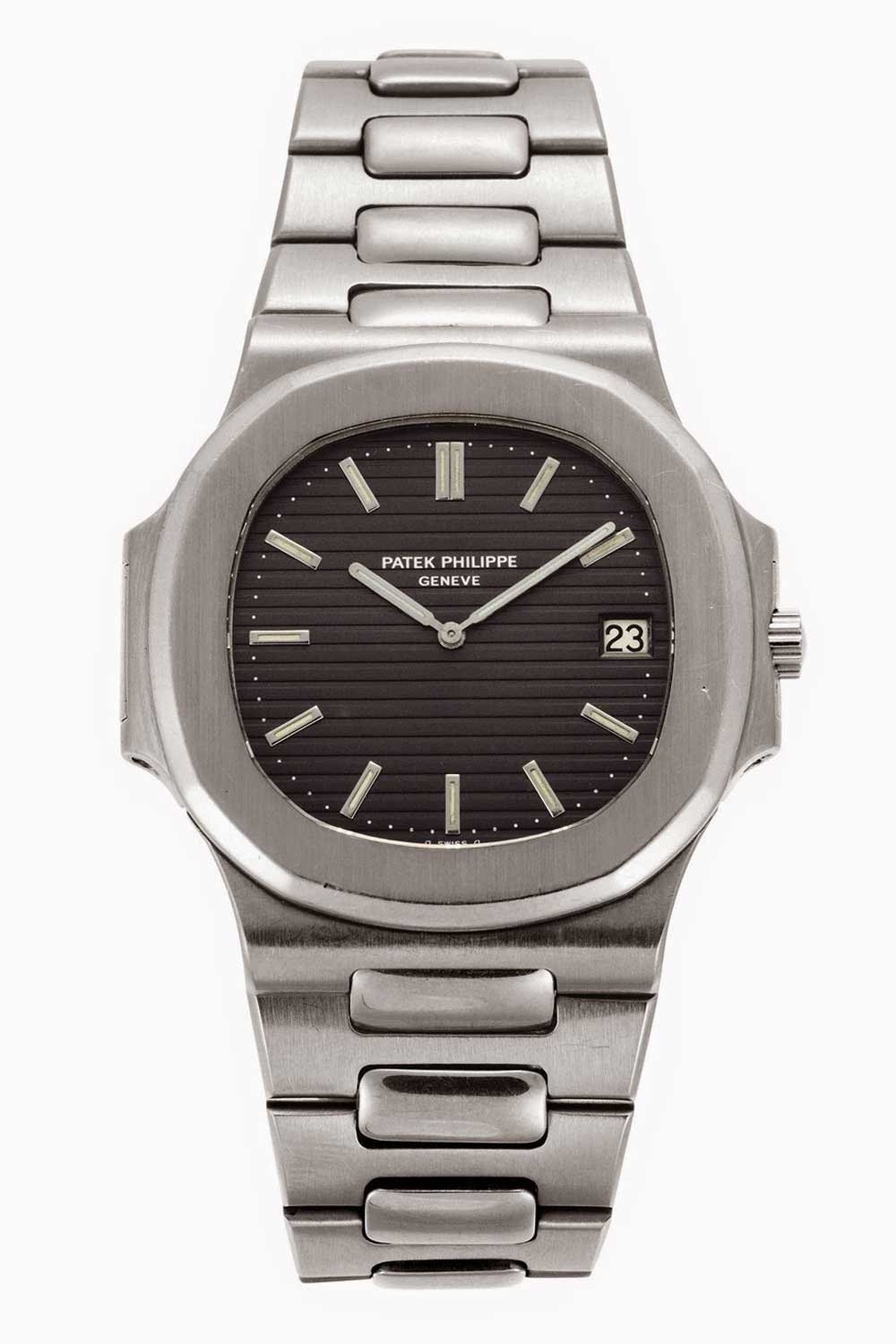
Original Patek Philippe Nautilus reference 3700/1 - 1976
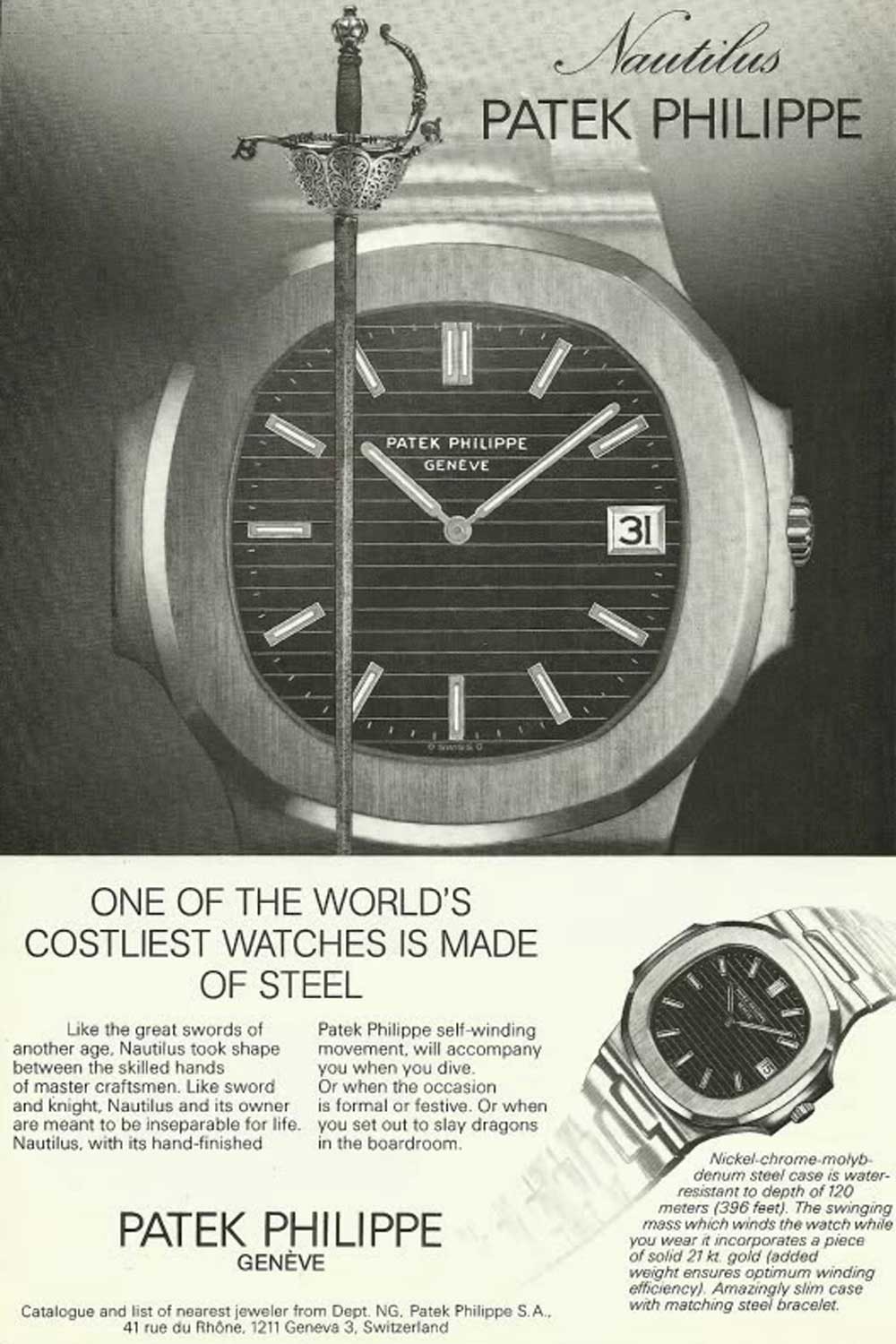
An old ad for Patek Philippe Nautilus ref. 3700
The Gay Frères (GF) story is essentially rooted in pocket watch chains and jewelry. In fact, GF’s jewelry pieces from the 1960s and ’70s are highly desirable amongst collectors of high-end artisanal work. Much like its watch bracelet business, GF made jewelry for many prestigious houses such as Hermès and Van Cleef & Arpels. In terms of the brand’s horological credentials, its name became well known for pocket watch chains in Geneva where it was first based. With the advent of the wristwatch, many pocket watch-centric companies began to fold, but GF adapted its work to making wristwatch bracelets, with one of the most well-known and successful being the Bonklip, which it sold in large volume to Rolex to be fitted for military deliveries.
In the mid-century, the popularity of stainless steel for watches really took off, and many of the important maisons needed a company that manufactured steel bracelets of the very highest quality. GF was the market leader in steel bracelet manufacturing, which is much harder than working with gold. Technical know-how and the correct machinery were both key in this success, and it led to GF being awarded contracts by all the key players in the industry. There was simply no other factory able to build the extremely complicated bracelet that was a key element of the Royal Oak, and the same was true when Patek Philippe needed the integrated bracelet for the Nautilus. GF was also key in making one of the most iconic bracelets of all time, the Rolex Oyster. The Oyster also had an integrated iteration that first appeared in the 1970s.
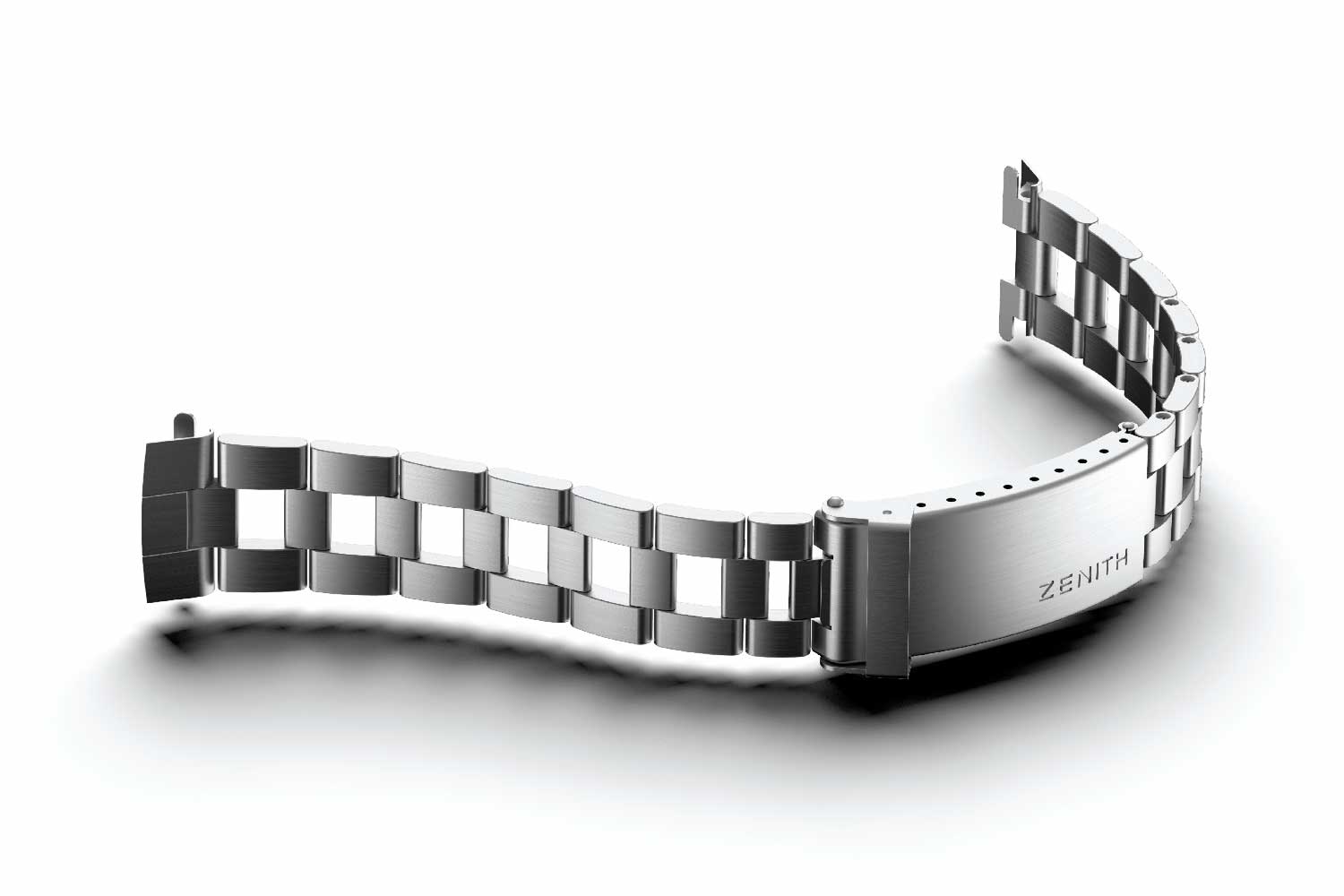
GF was the market leader in steel bracelet manufacturing, which is much harder than working with gold. Seen here is an example of Gay Frères bracelet made for Zenith.
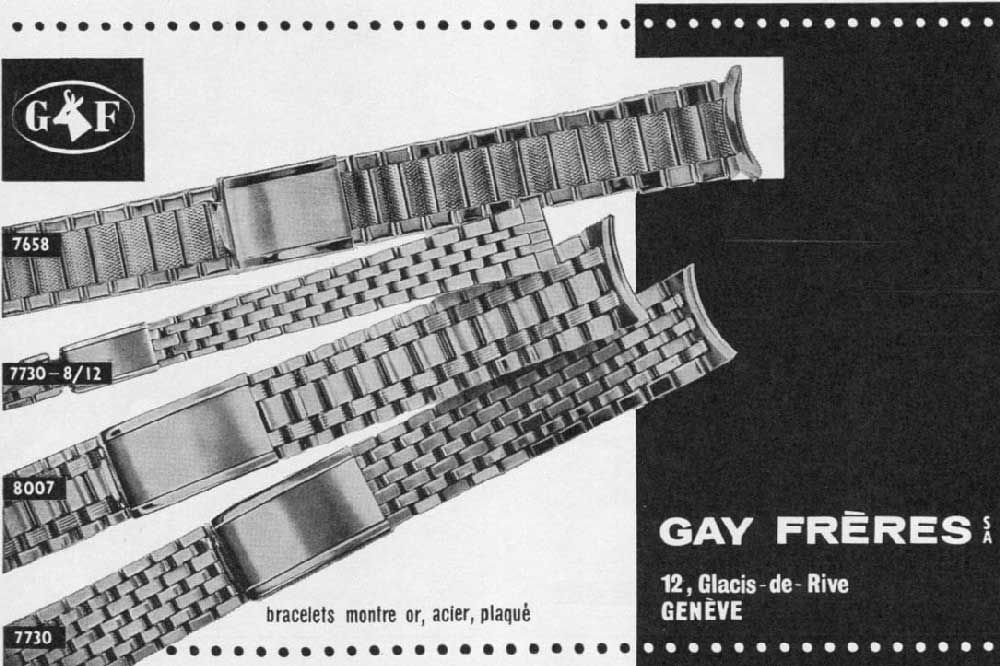
Original Gay Frères print ads
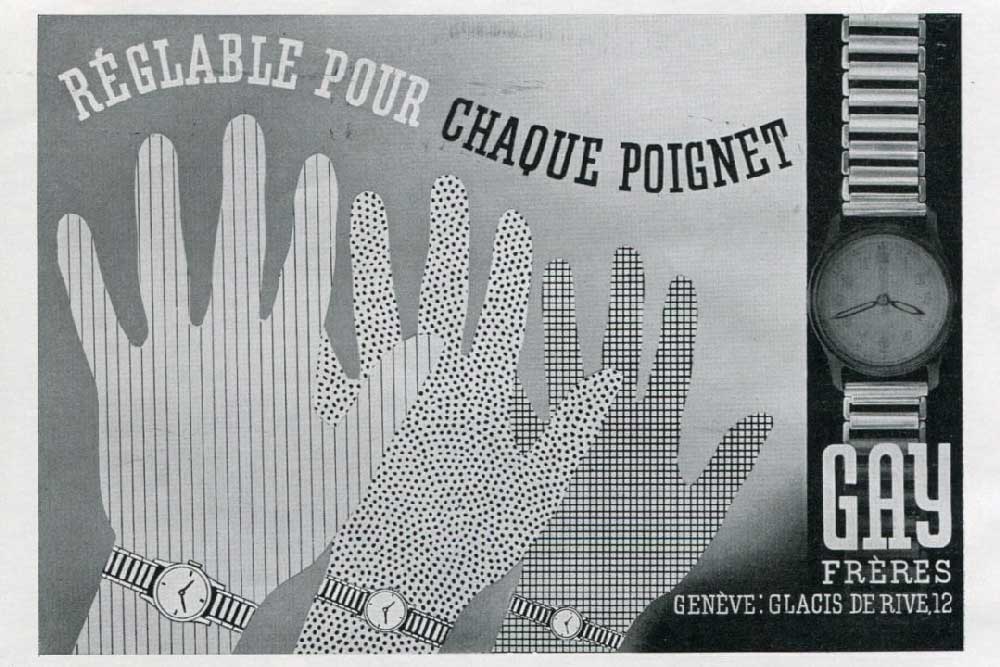
Original Gay Frères print ads
In 1975 Rolex unveiled the reference 1530, a watch seen by many as a prototype for the Oysterquartz that came two years later in 1977. The reference 1530 housed a regular Datejust movement and dial but cased in a new steel integrated bracelet watch. The angles of the case were squarer than a traditional Oyster, and the lines flowed seamlessly into the bracelet. The Oysterquartz was made in two versions, both iconic Rolex “brands within a brand” — the Datejust and the Day-Date.
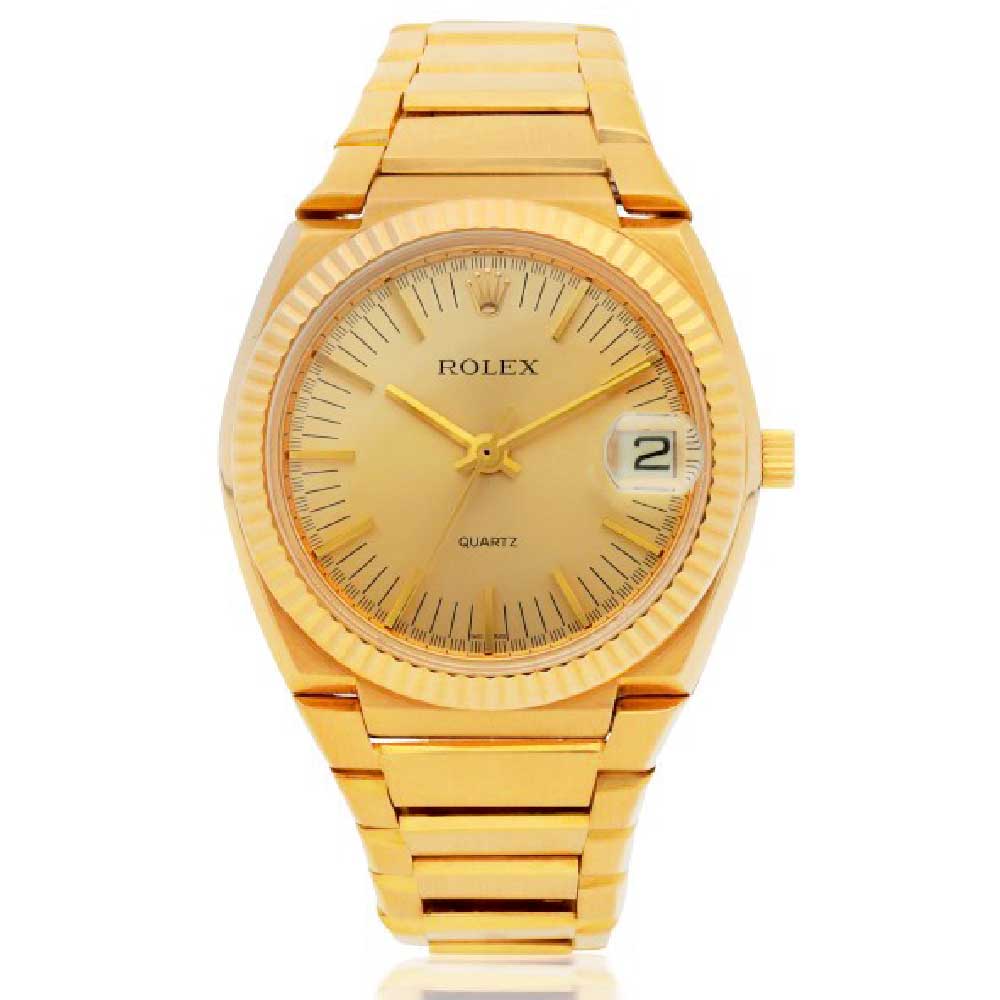
In 1972, Rolex launched the quartz watch, reference 5100. Cased in white or yellow gold, the so-called “Texan” was a big watch with an integrated bracelet. (Image: Sotheby’s)
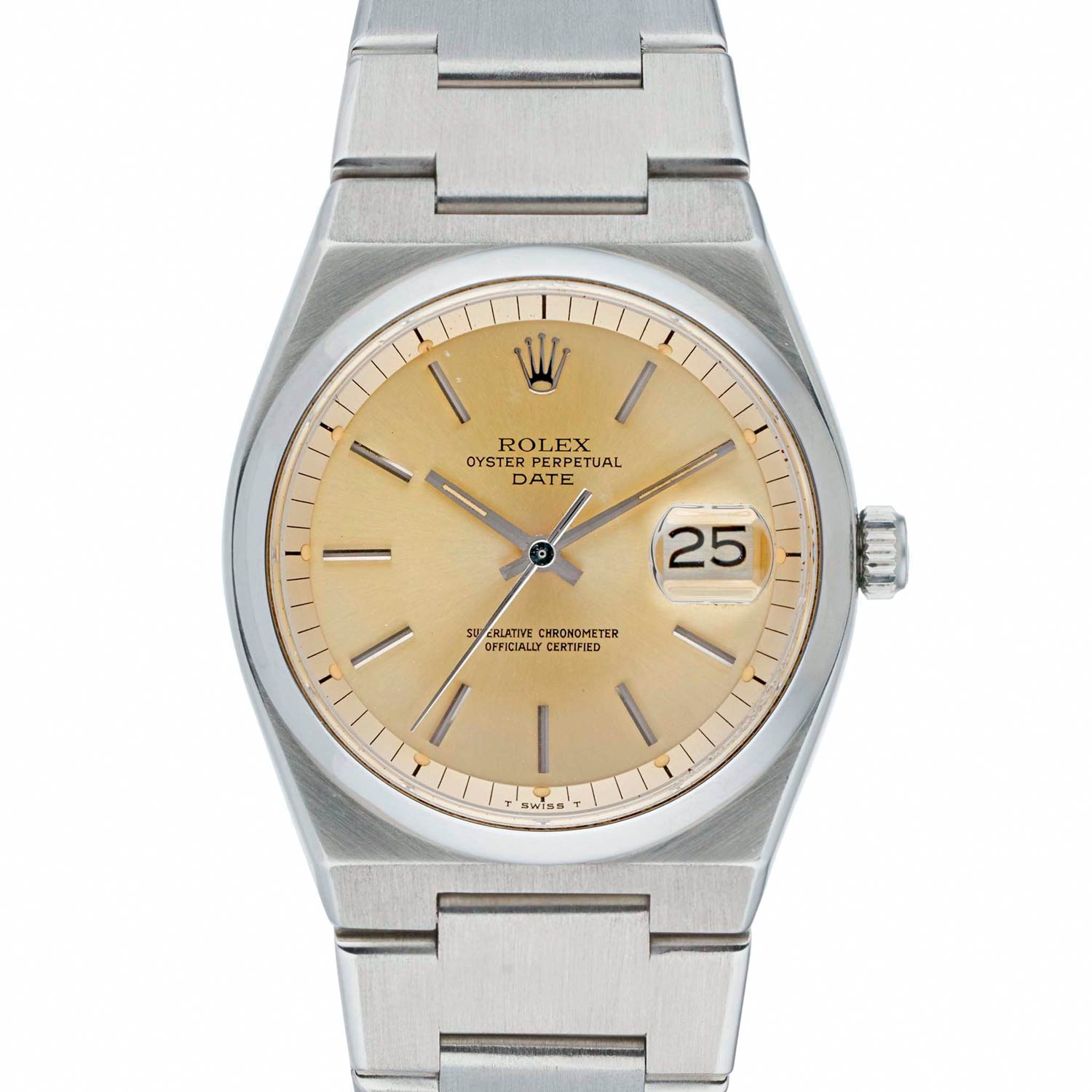
A steel Rolex 1530 with automatic movement in Oysterquartz case. The reference 1530 housed a regular Datejust movement and dial but cased in a new steel integrated bracelet watch.
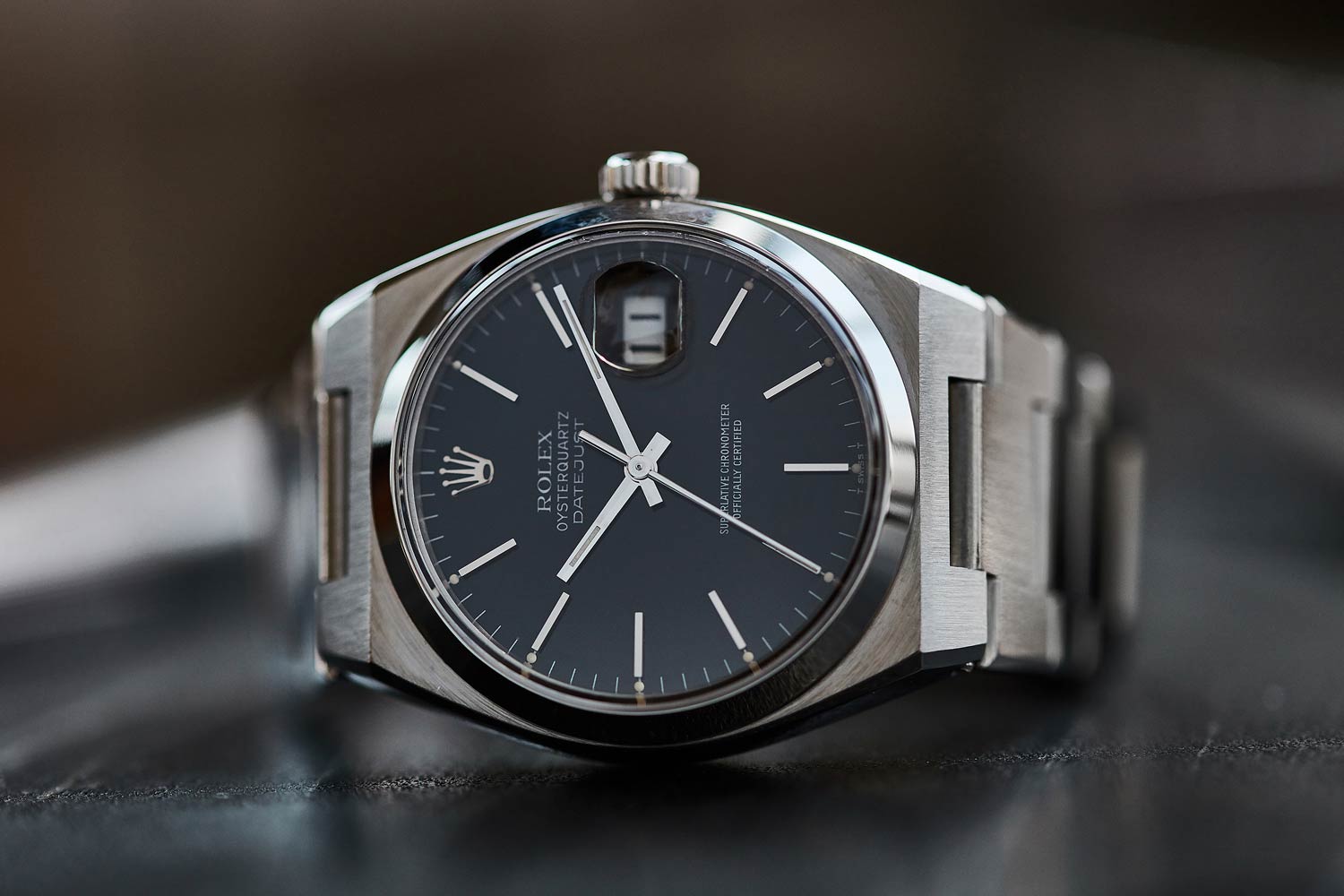
The Rolex Oysterquartz Ref. 17000 watch from the 1980s (Images: A Collected Man)
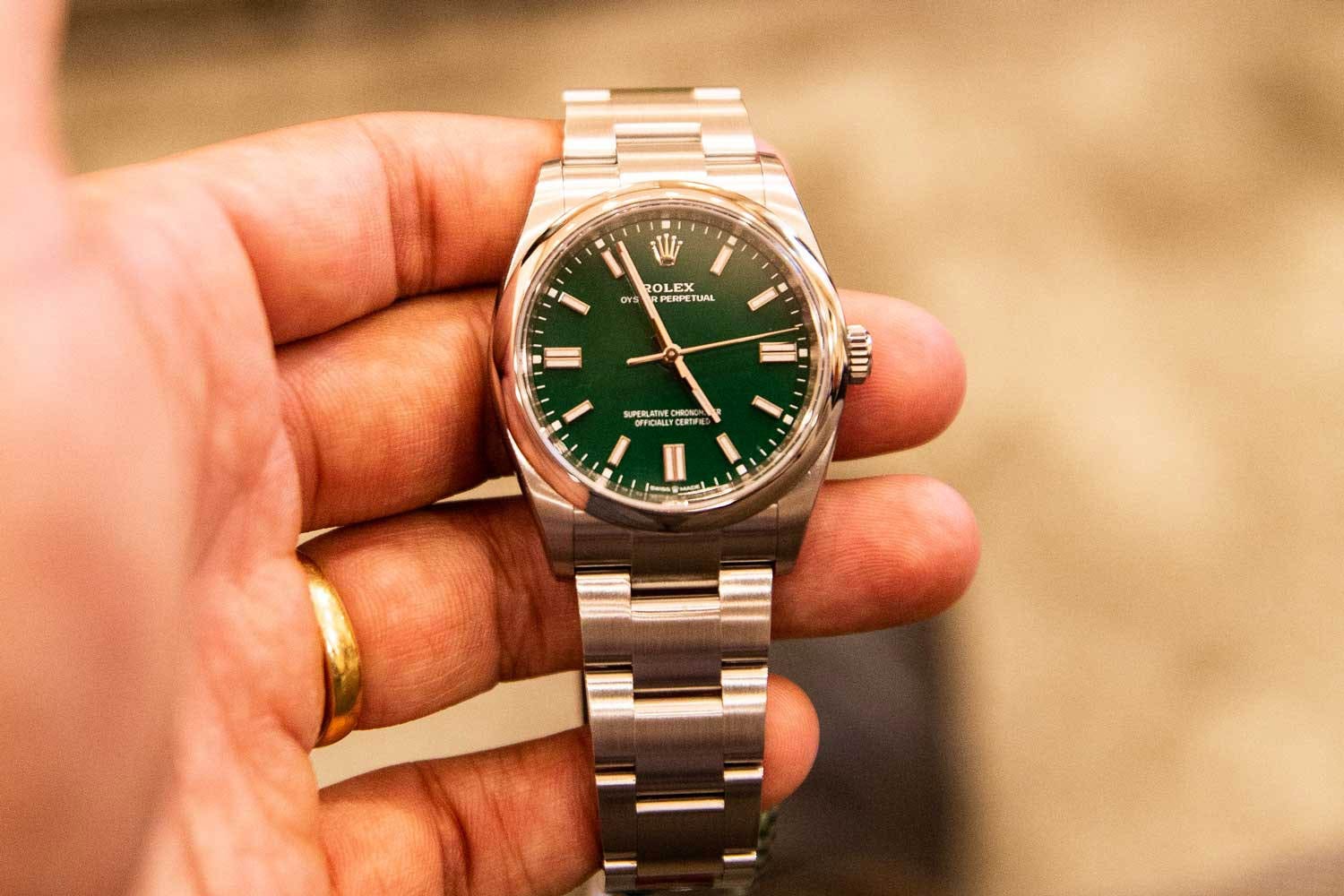
The modern Rolex Oyster bracelet in 904L steel. Rolex acquired Gay Freres in 1998.
The watch looked more Royal Oak-esque than Nautilus, but it still very much had its own character and vibe. The bezel was flat like the Nautilus but had five rivets that bore a passing resemblance to the Royal Oak. The watch was a good size at 40mm and had a bracelet that was fully integrated. The dial had a basket-weave, waffle-esque look that, like early Milgauss models, added to the watch’s antimagnetic properties. Like other watches of the era, the reference 1832 is known as the Jumbo and due to its very poor performance at launch, is thought to exist in only around 1,000 examples. The story didn’t end there, though. The watch had a brief and slightly unhappy return in 1989 before being resurrected in the 2000s with a tourbillon version, a chronograph and even a perpetual calendar!
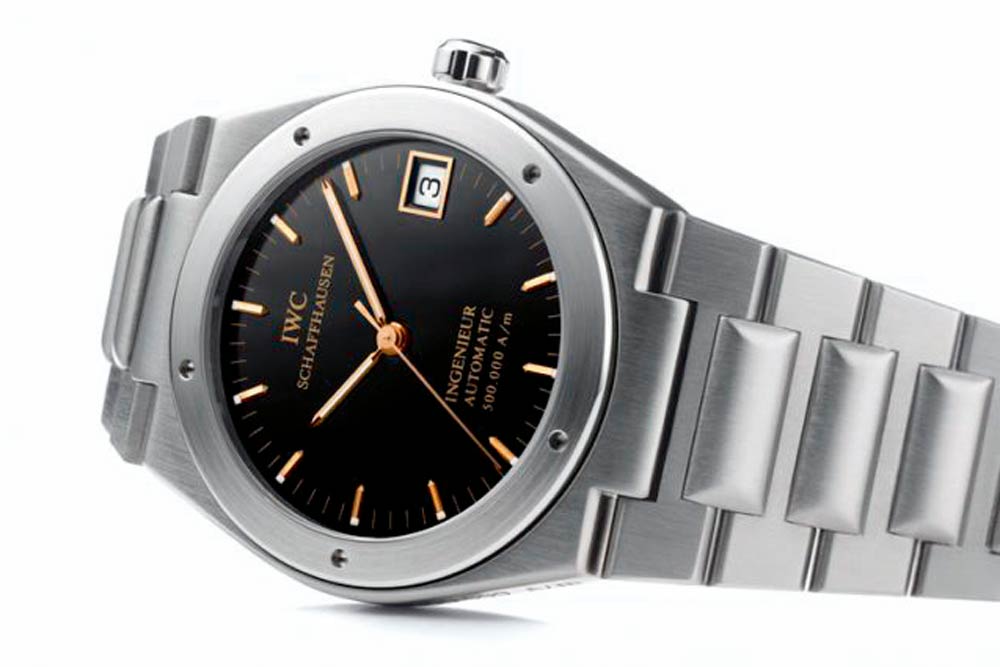
The IWC Ingenieur reference 3508 from 1989 looked more Royal Oak-esque than Nautilus, but it still very much had its own character and vibe.
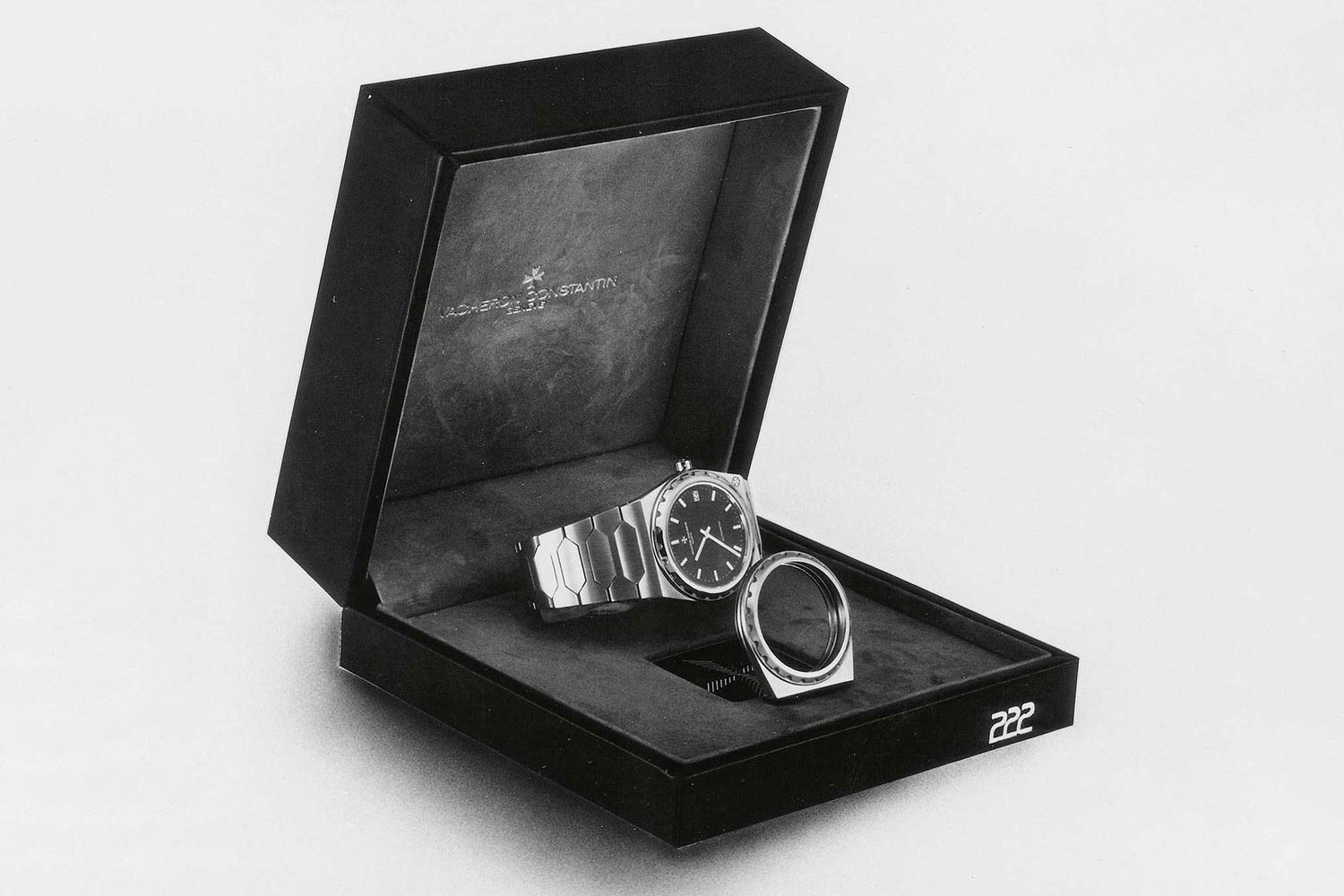
Vacheron Constantin entered the sports integrated bracelet watch fray in 1977 with the reference 222 designed by Jörg Hysek.
Yep. Movement by Jaeger-LeCoultre? Indeed, sir. What — another GF bracelet? That’ll be another affirmative, your honor! The Vacheron 222 is the perfect illustration of the power of horizontal watchmaking of the 1970s.
The 222 was available in three sizes, but we are really only concerning ourselves with what collectors term the Jumbo size that was a snip below the others at 38mm, featuring a stylized “222” engraving on the caseback and a gold VC Maltese cross on the lower right lug. The bezel was unusual without being “too much,” having notches around the circumference that almost looked like they could be gripped to rotate it. The majority of the 700 Jumbos made featured either blue or charcoal gray dials, with a small number having silver dials and a handful with white dials. One natty point to make is that the watch was sold with a matching money clip in the form of the bezel. What a great set to have bought!
The final watch that I am including in this section is the Cartier Santos. All watch brands were struggling in the 1970s, and Cartier was no exception. The CEO of Cartier in 1975, Alain-Dominique Perrin, knew that he had to do something a little different in order for the brand to survive. The Must de Cartier diffusion line was launched in 1977 and was a huge success, making the brand’s iconic watches available to the masses, and so Perrin launched the established Santos as an integrated bracelet watch in 1978. In what was a hugely bold move and completely out of kilter with Cartier’s previous output, he decided to make the watch in steel. However, this being a Cartier, it had to have an element of luxury, and so he used yellow gold for the bezel with steel screws and placed yellow gold screws on the bracelet — and so the two-tone watch was born. The watch featured the signature black painted Roman numerals on a white dial and small, discreet crown guards which added to the piece’s sporty aesthetic.

Alain-Dominique Perrin, Cartier’s CEO from 1975 to 1998, came up with the idea of launching an affordable Santos in steel with gold accents in 1978. (Image: theconnectedtable.com)
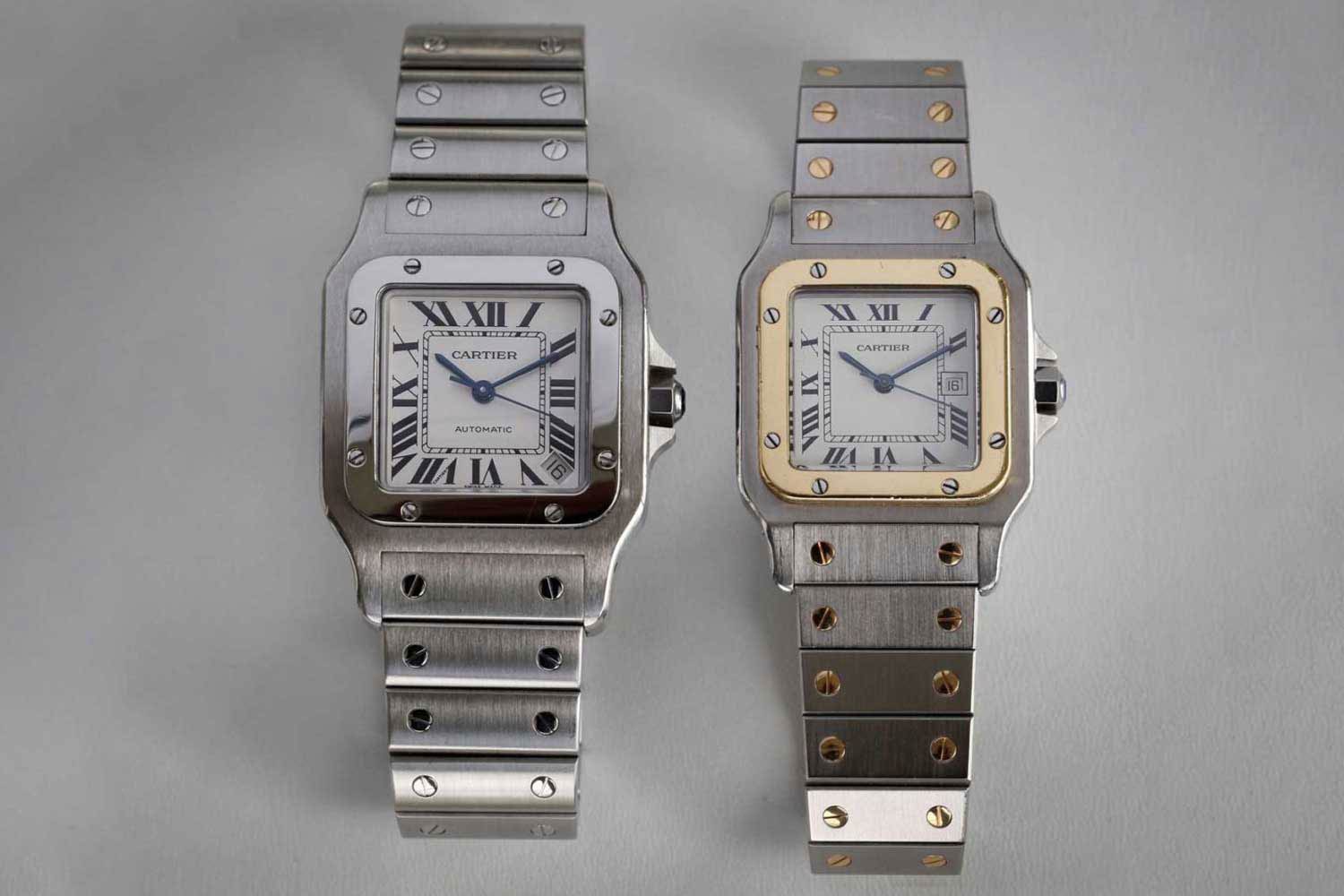
The Cartier Santos Galbée on the left and the 1978 two-tone Santos on the right (© George Cramer)

The Cartier Santos' fame saw its way to Hollywood on the wrist of actor Michael Douglas in his portrayal of Gordon Gekko in the 1987 film, Wall Street
The Renaissance Kids
With the huge rise in interest in sports integrated bracelet watches over the past few years, many brands have looked into their back catalogs and revived old friends for the modern market. One such brand is Chopard who in 2019 launched the Alpine Eagle which was based on a watch from the company’s past hits, the St. Moritz. The name itself imbued the watch with a sense of glamor that truly peaked in the 1970s and ’80, with St. Moritz being the Euro playground to which the Côte d’Azur dwellers decamped during the winter months. The St. Moritz project was spearheaded by the then 20-year-old Karl-Friedrich Scheufele, who convinced his father, Karl Scheufele III, that the family brand needed a watch in tune with the times where the sports integrated watch was definitely king. His father acquiesced and the new watch was born.
In Karl-Friedrich’s words, “I knew that this was exactly the type of watch my generation wanted, something I could wear while skiing but also when I put on a tuxedo.” The watch was made entirely in-house and was pre-launched in Hong Kong in 1979 and then officially released at the Basel Fair in 1980. Interestingly, the watch was an immediate hit with Chopard taking 1,000 orders at Basel that year, making it a faster seller than other watches in this genre from that era. The watch features a bezel set with eight screws, but with unusual curving elements shaped around each of the pair of screws at the quarters of the bezel. The integrated three-link bracelet was almost utilitarian and minimalist compared to other bracelets of the time, with utterly clean lines.
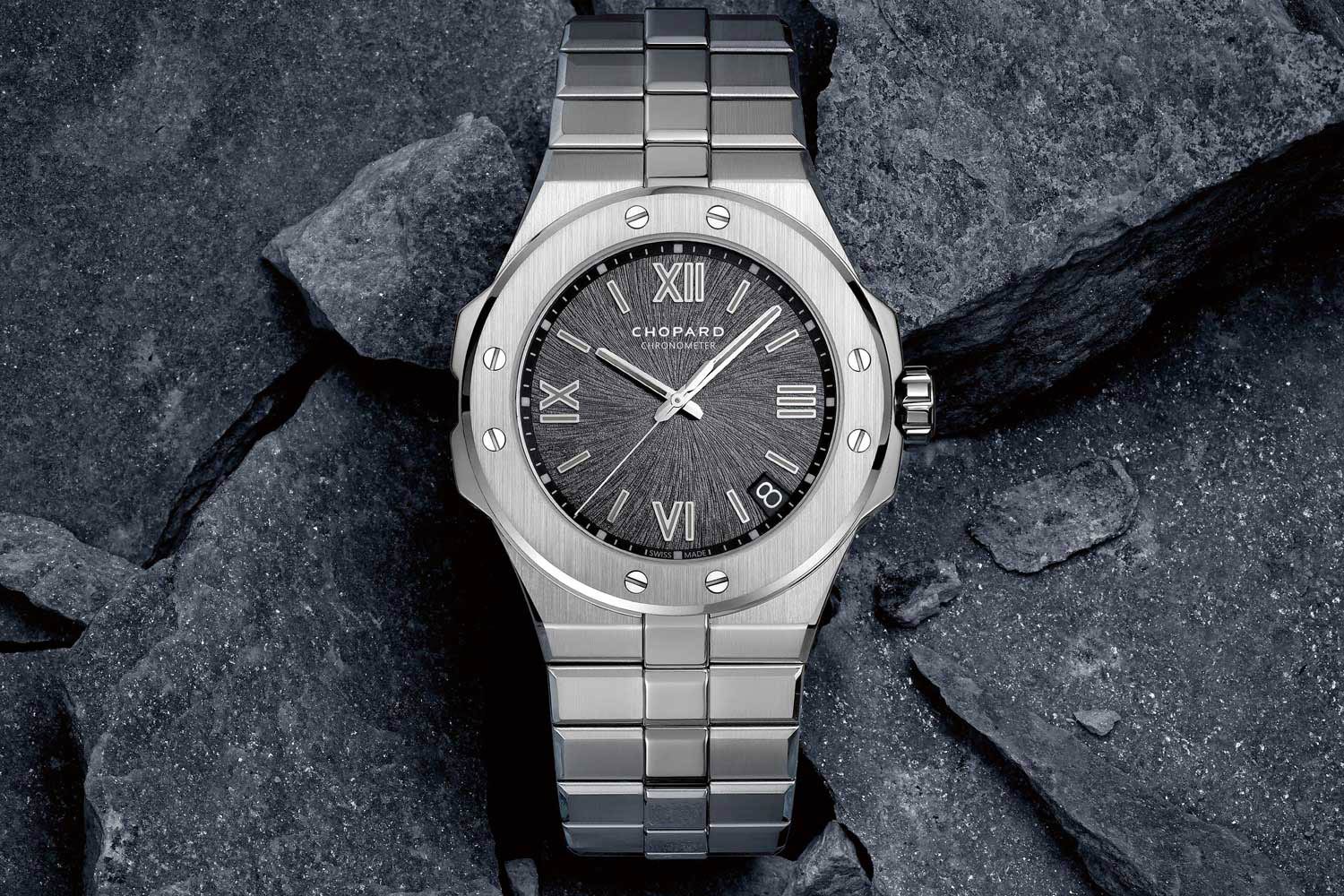
The first Alpine Eagle unveiled in 2019. With two screws at each compass point, visible ears and an integrated bracelet, the Alpine Eagle may evoke some association with other integrated bracelet watches, but it has a contemporary feel all on its own, particularly with its modern fonts on the printed, textured dial
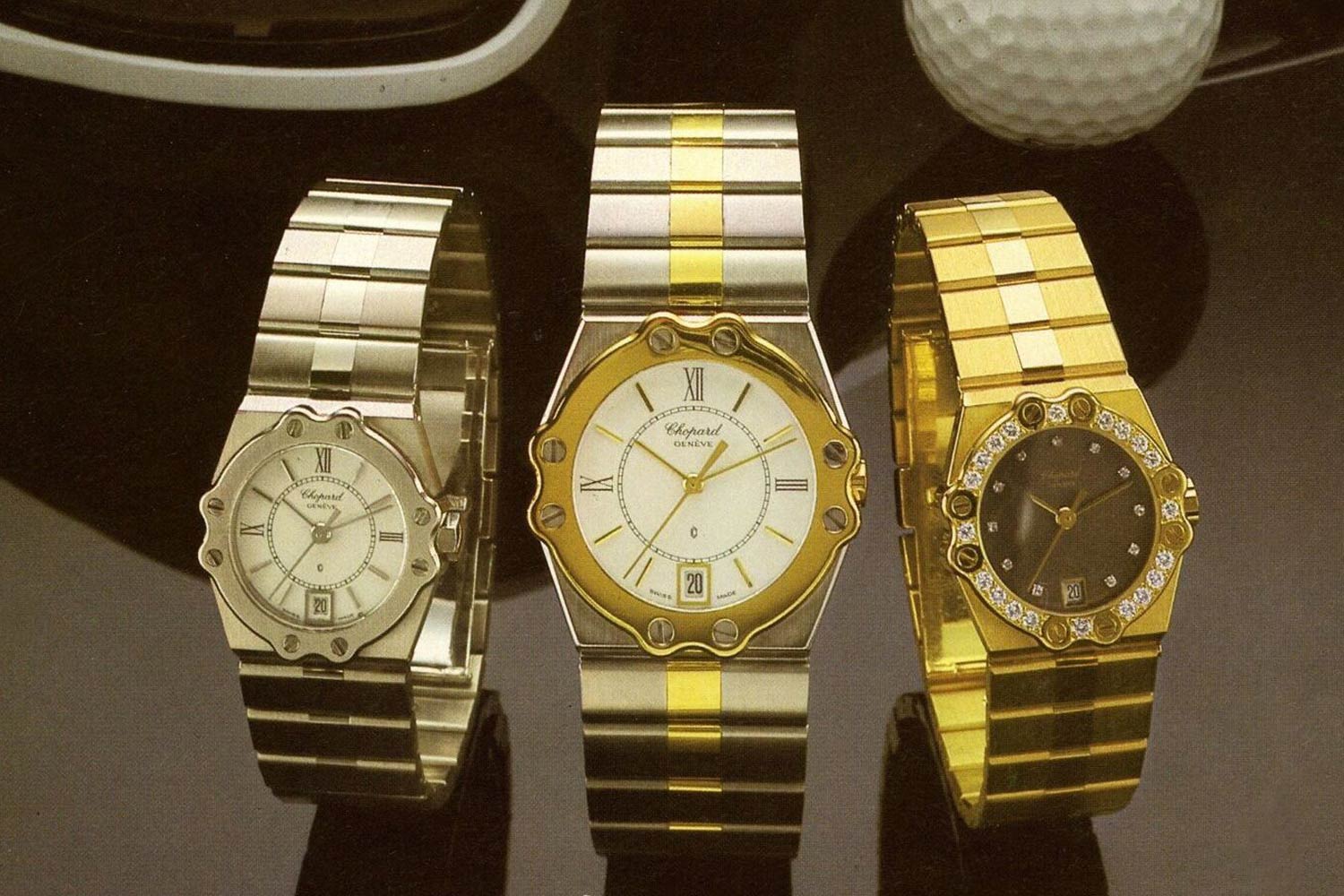
St Moritz advertisement from the 1980s
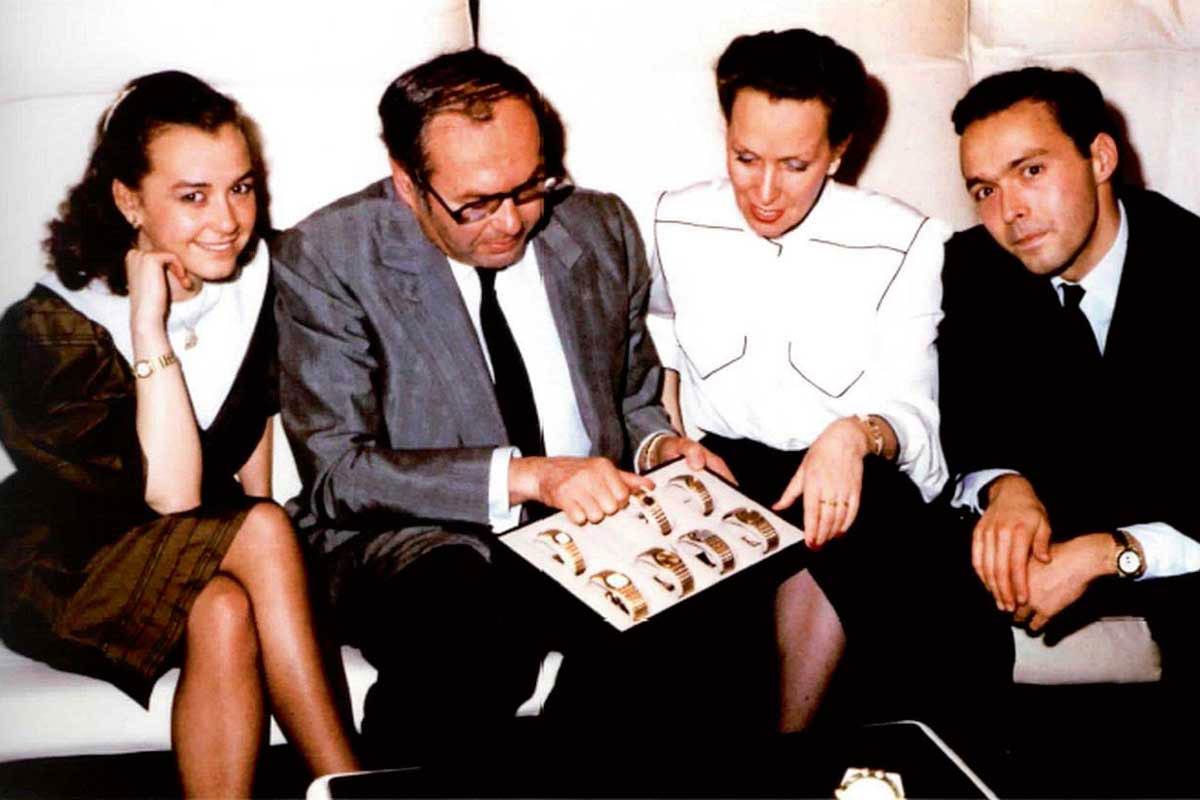
The Scheufele family in 1980 presenting the St Moritz collection
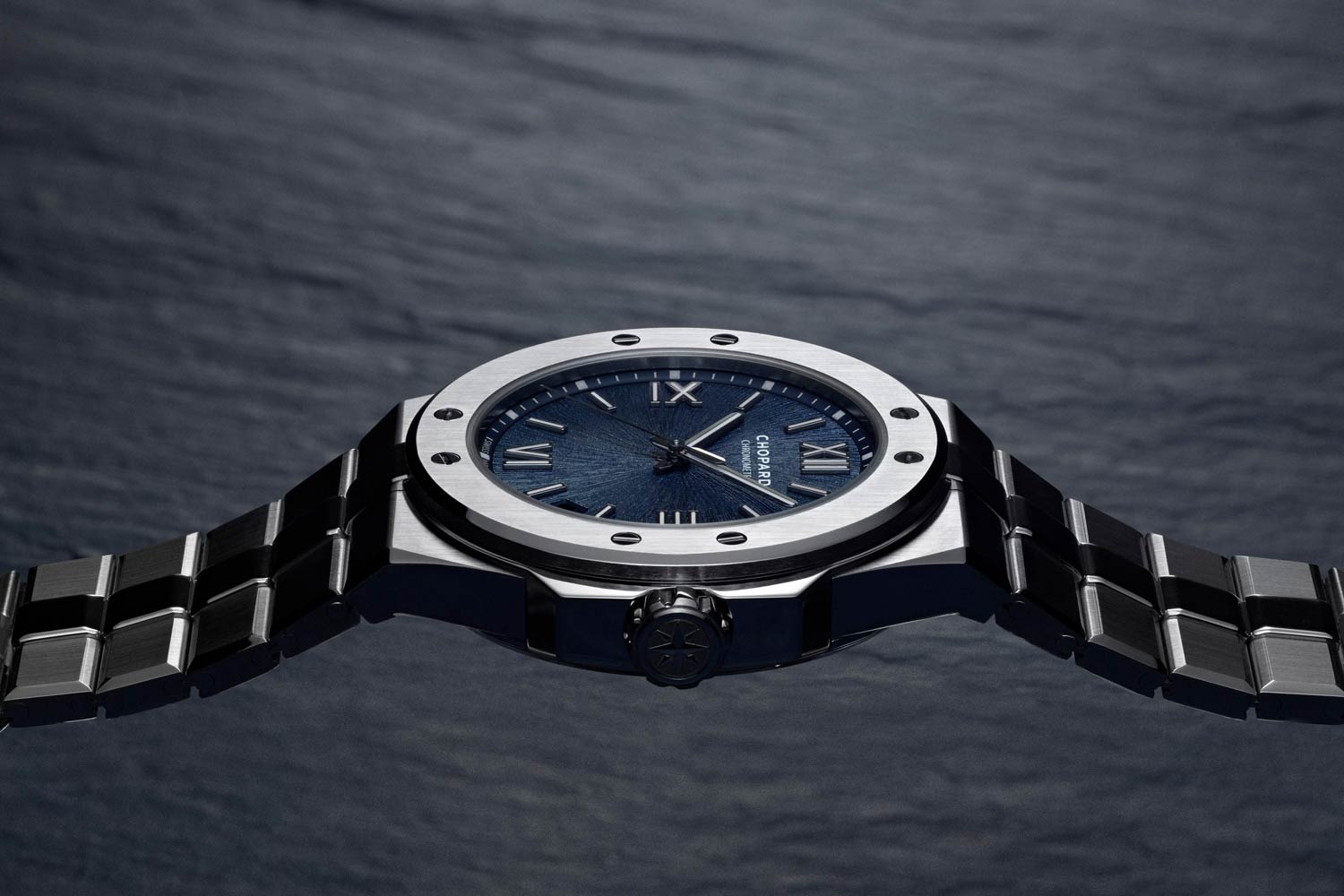
Unlike some of the older integrated bracelet watch designs, the Alpine Eagle’s bracelet falls straight down against the wrist and can accommodate a vast variety of wrist sizes.
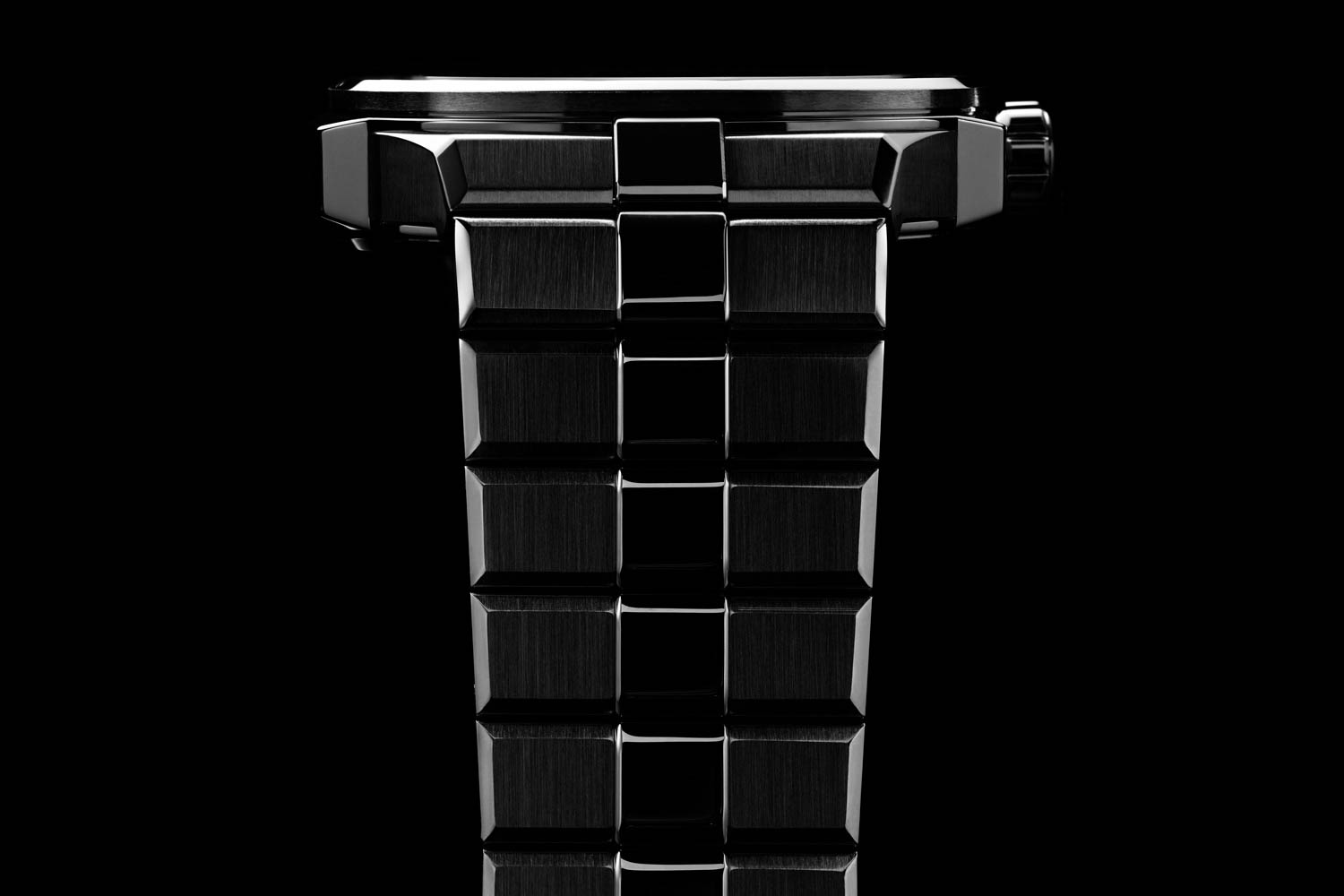
Unlike some of the older integrated bracelet watch designs, the Alpine Eagle’s bracelet falls straight down against the wrist and can accommodate a vast variety of wrist sizes.
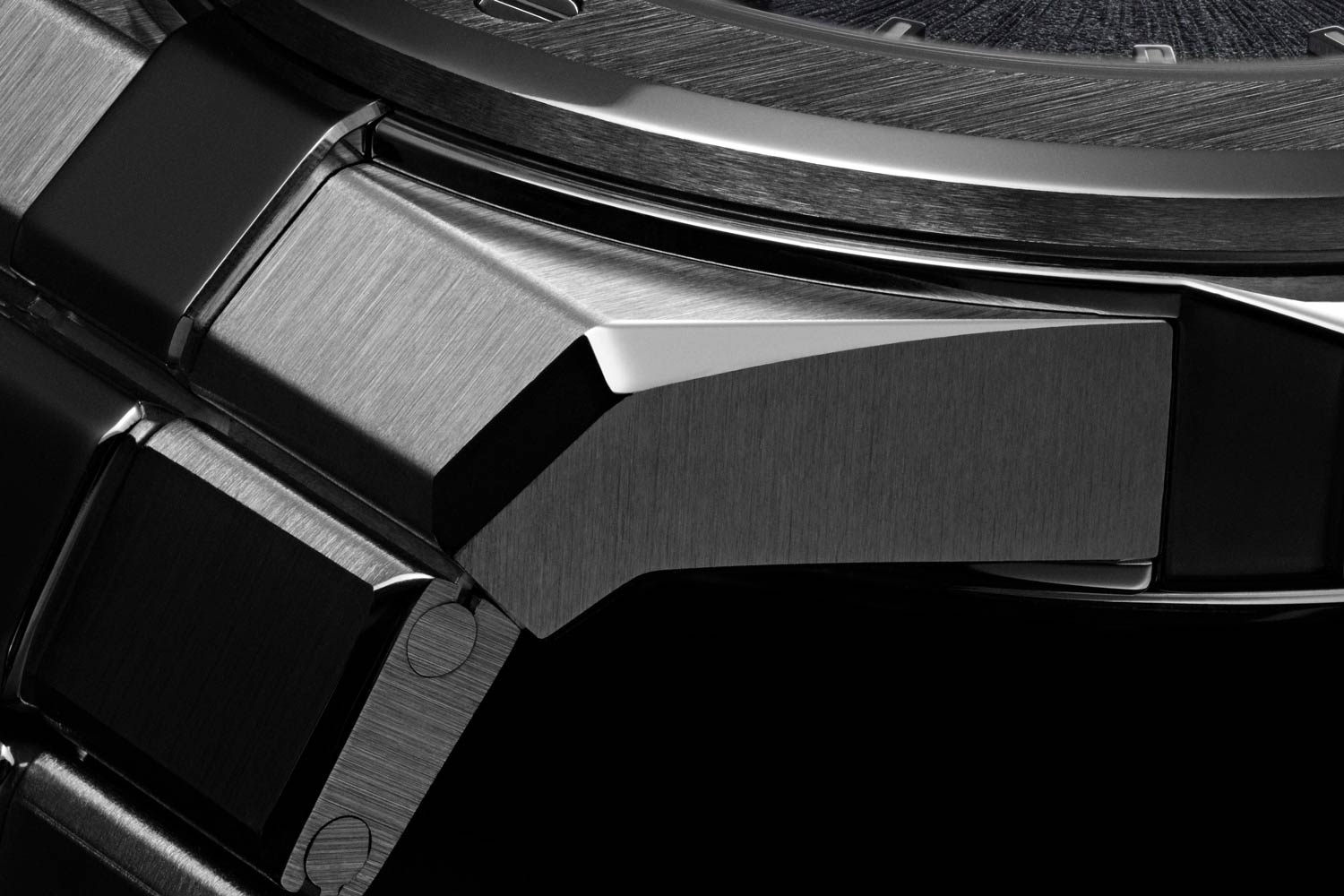
Unlike some of the older integrated bracelet watch designs, the Alpine Eagle’s bracelet falls straight down against the wrist and can accommodate a vast variety of wrist sizes.
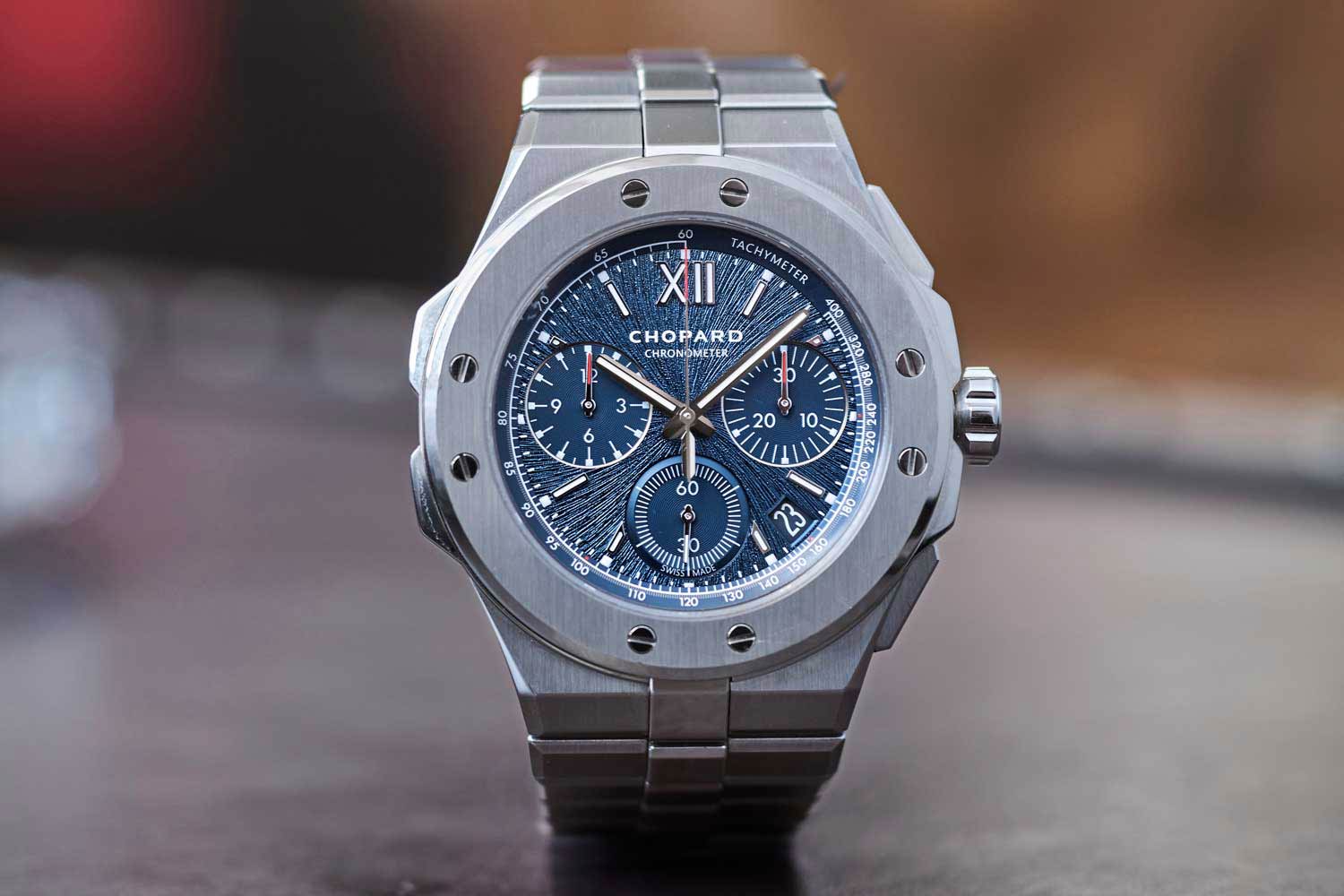
The Chopard Alpine Eagle XL Chrono is designed with a printed swirling pattern that’s meant to evoke the iris of an eagle. It is immediately recognizable, distinct and wholly original. (©Revolution)
The watch got its first serious outing when Bond girl Ursula Andress wore it to the World Polo Cup in Palm Beach. The watches were never branded on the dial as Polo, rather it was used in advertising. It was immediately taken up by tastemakers of the time and could be seen on many wrists including those of Andy Warhol and Brooke Shields and was associated with the sport from which it took its name. The watch was properly relaunched in 2016 as the Polo S, the “S” signifying steel, which was a departure from the earlier incarnations but perfect for the recent surge in demand for luxury steel sports watches. The new 42mm watch seemingly ditched the integrated bracelet, allowing for the option of a leather strap which is an important element of modern watch ownership, in my opinion. And, let’s be honest, when you rock this watch in St. Trop, you want to fit it with a JPM suede strap in turquoise anyway, don’t you?
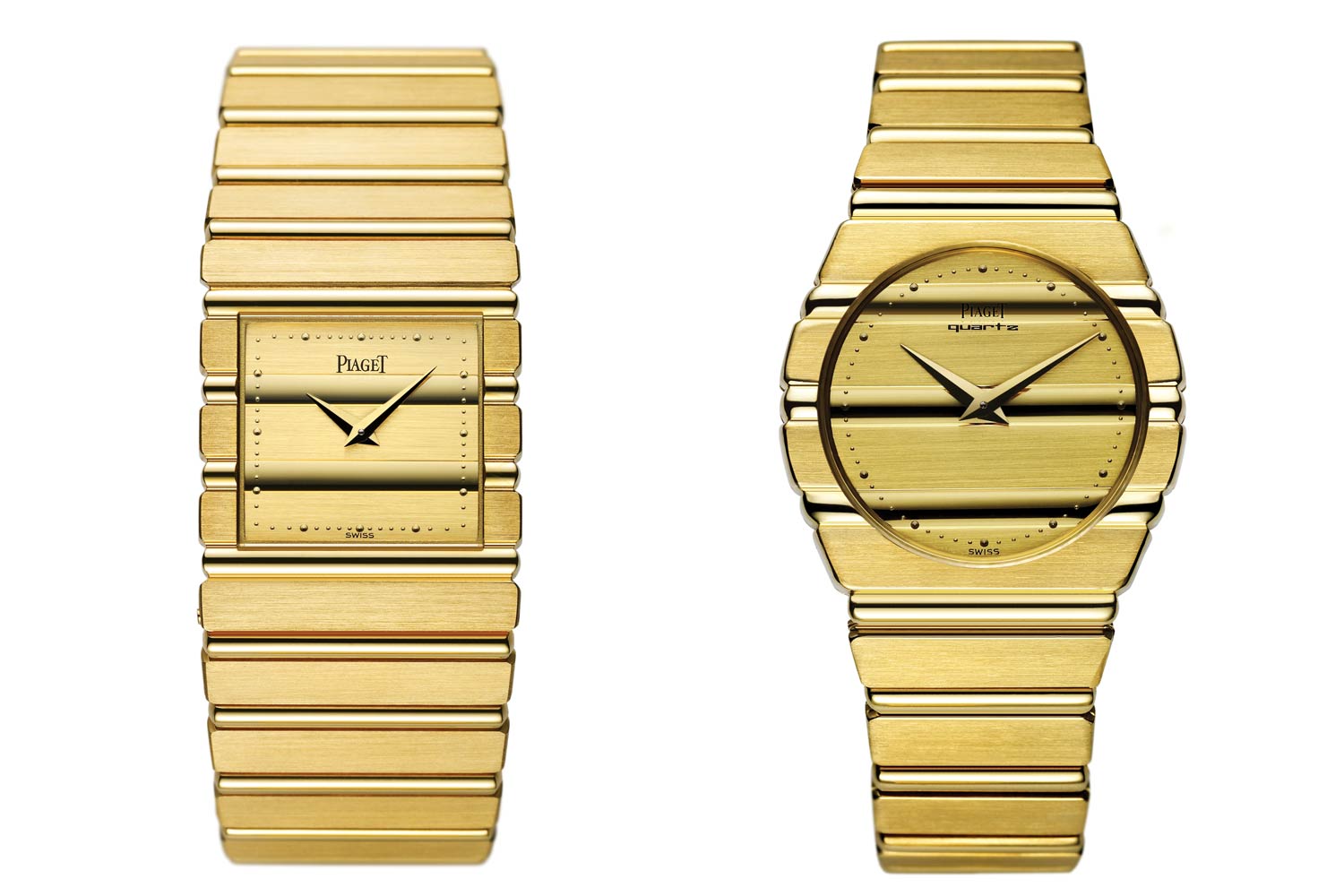
In 1979 Yves G. Piaget unveiled the Polo, a watch that was very much of the time aesthetically with a fully integrated bracelet and named after the sport of kings.
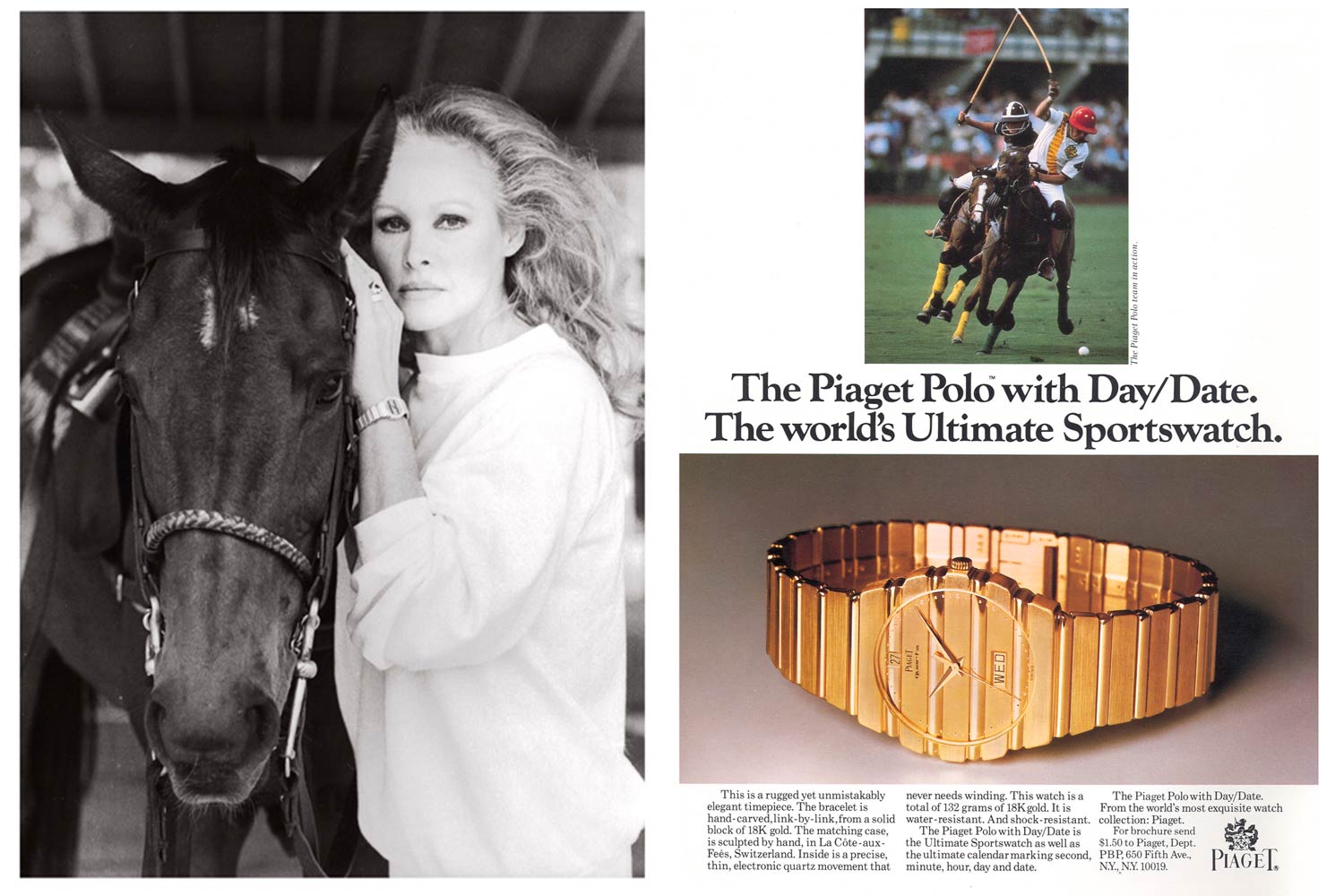
The watch got its first serious outing when Bond girl Ursula Andress wore it to the World Polo Cup in Palm Beach.
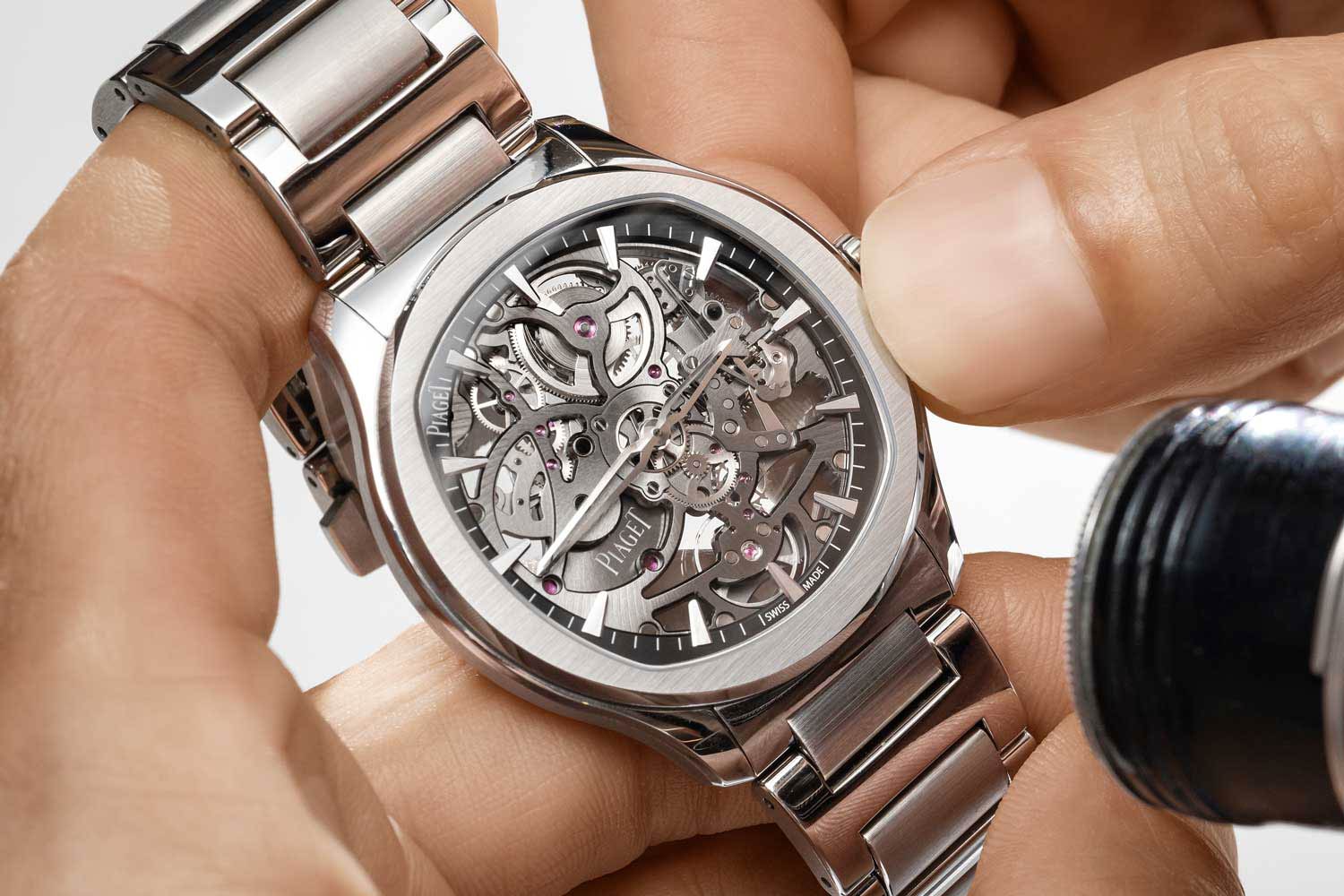
Piaget Polo Skeleton powered by the now evolved, 2.4mm 1200S1 self-winding caliber
Then in 2020, Tudor rekindled its integrated sports watch affair by offering the Royal collection. The 41mm flagship model was a date and day model, but there were options in steel, steel and gold, and various dial options. All the watches in the Royal collection were powered by a Tudor T600 series movement, which allowed the watches to be offered at a very accessible price point. Cases and bracelets were in 316L steel, the soleil-finish dials featured applied Roman or diamond hours (or mother-of-pearl in some cases) and the watch came with Tudor’s standard five-year warranty.
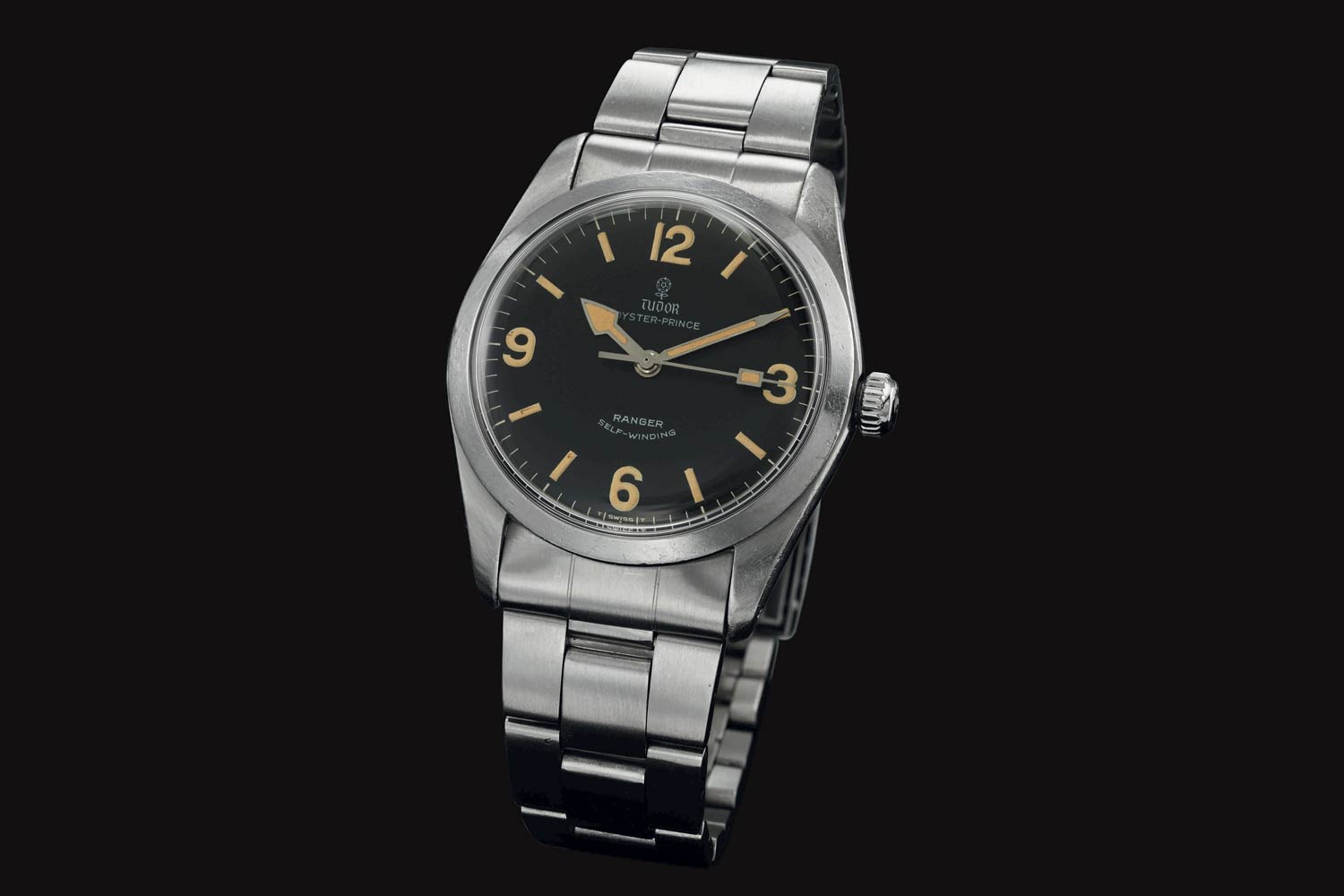
The Tudor Ranger II with an integrated bracelet from 1973
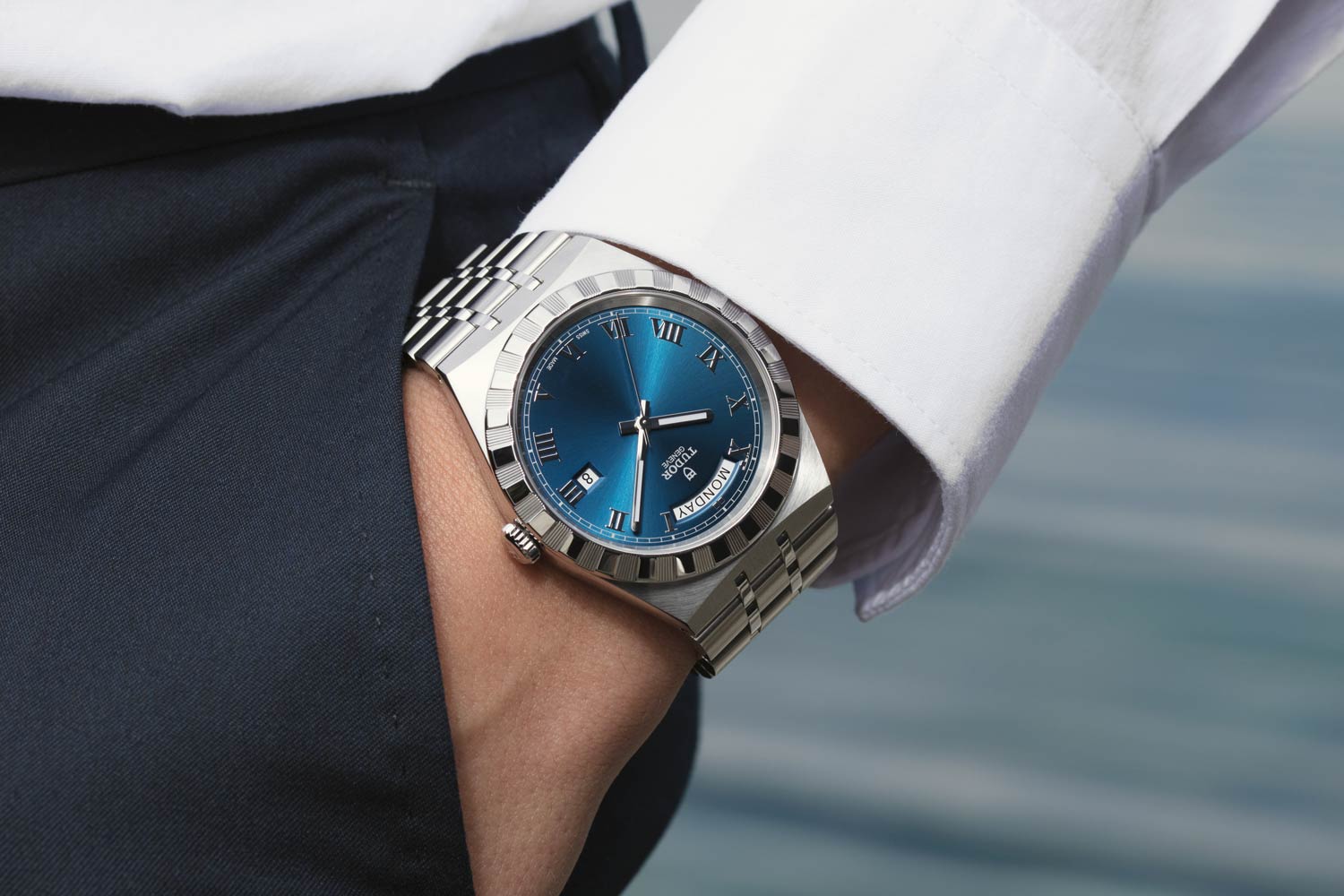
Tudor Royal with date and day
The Bright Young Things
Not all brands have the history of the established houses, but it doesn’t mean that they can’t join in the party. I keep saying that the modern trend for integrated sports watches is huge, but it really can’t be underestimated just how colossal this market is. In 2014 Bvlgari unveiled its Bvlgari Octo Finissimo, a watch that I always find hard to believe is so young in the market. It feels more like a stalwart to me, such is its established place in the hearts of watch lovers. Even though the Octo Finissimo is a recent watch, there is a link to the master of eight-sided bezel integrated sports watches, Mr. Genta. In 2000 Bvlgari bought the Gérald Genta brand from the Tay family, owners of The Hour Glass in Singapore, thereby inheriting the eight- sided watch and eight-sided bezel that Genta had designed after setting up his eponymous brand and yet which had never quite reached its full potential.
Bvlgari, being rightfully very proud of its Roman heritage, wanted the new watch to express two very Italian qualities, strength and elegance, both of which were always key elements of its high-end jewelry and ladies’ watches. And so the dream team comprising Jean-Christophe Babin, Fabrizio Buonamassa and Guido Terreni set about reimagining the Octo watch with a very important objective, to make the watch the thinnest mechanical watch on the market, hence the Finissimo in the name. However, it was key that the watch being thin wasn’t the be-all and end-all; it also had to be innovative and be executed with finesse. Unlike watches discussed earlier, the Bvlgari watch was completely made in-house through Bvlgari’s vertically integrated business. Jean-Christophe Babin was quoted as saying, “The Octo Finissimo was only possible because we own our movement maker, dial maker, casemaker [and] bracelet maker, as it would be impossible to convince outside suppliers to make the effort we needed.”

(From the top-right) 2014: Octo Finissimo Tourbillon Manual; 2017: Octo Finissimo Automatic 2016: Octo Finissimo Minute Repeater; 2018: Octo Finissimo Tourbillon Automatic; 2019: Octo Finissimo Chronograph GMT Automatic; 2020: Octo Finissimo Tourbillon Chronograph Skeleton Automatic
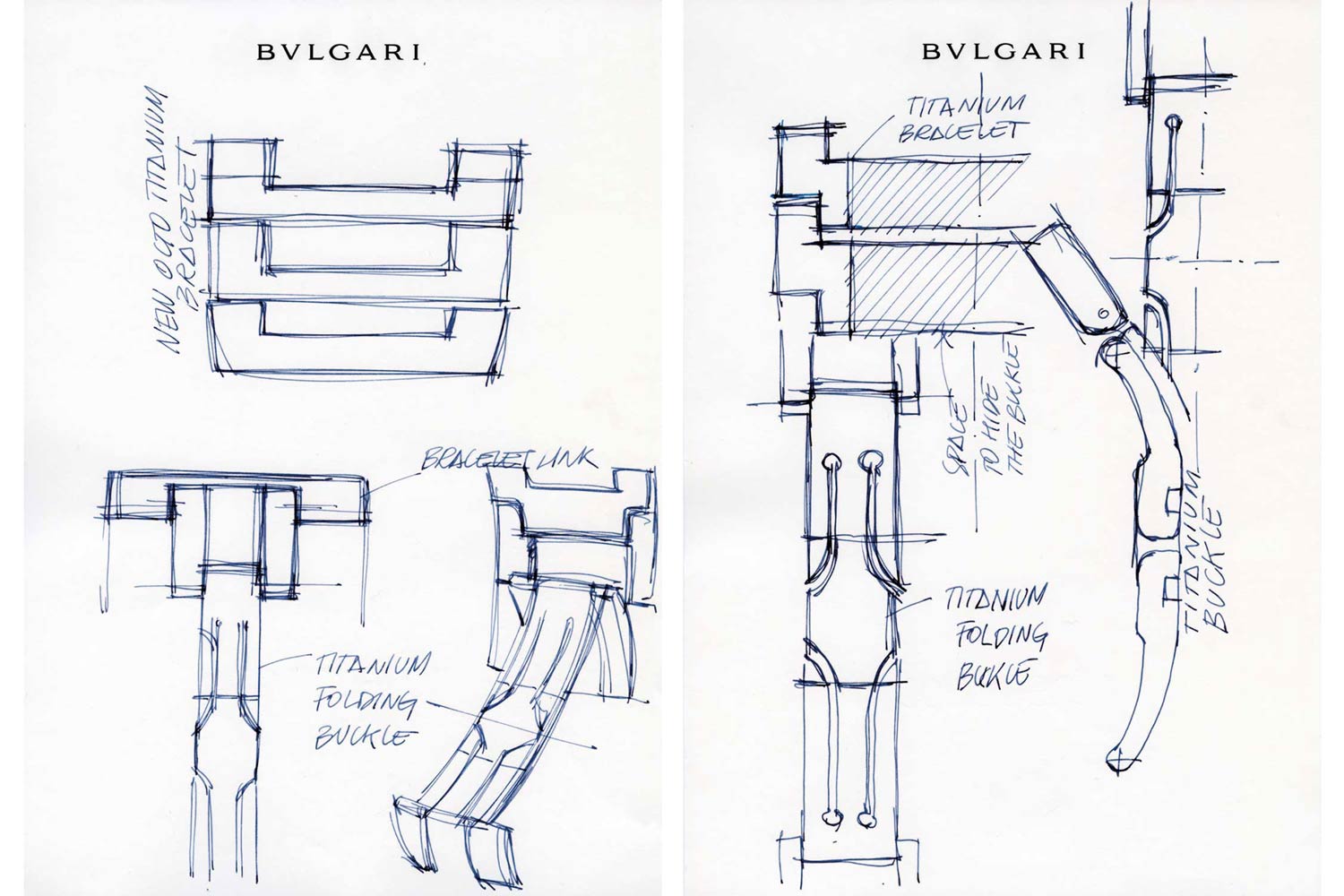
Drawings showing the conception of the Octo Finissimo's bracelet

Launched this year, Bvlgari's Octo Finissimo Perpetual Calendar is the world’s slimmest automatic watch with perpetual calendar function.
Bell & Ross released the BR 05 in 2019, and whilst it wasn’t technically the first integrated bracelet sports watch from the brand, it was a new direction and a commitment to join the fray in this segment of the market. Inspired by urban landscapes and modern architecture, particularly skyscrapers, the watches have a comfortably familiar look yet exude their own personality. There are some of the classic trademarks present, including a screw-down bezel, refined crown guards and a H-link style bracelet. The case is the signature B&R softened square that gently falls into the bracelet — an effect enhanced by the resolutely round hole — porthole-esque maybe but certainly a nod to the brand’s aviation links by resembling the instruments in a cockpit! An interesting element is that the crown guards are affixed to the case by screws, which nicely echoes the bezel.
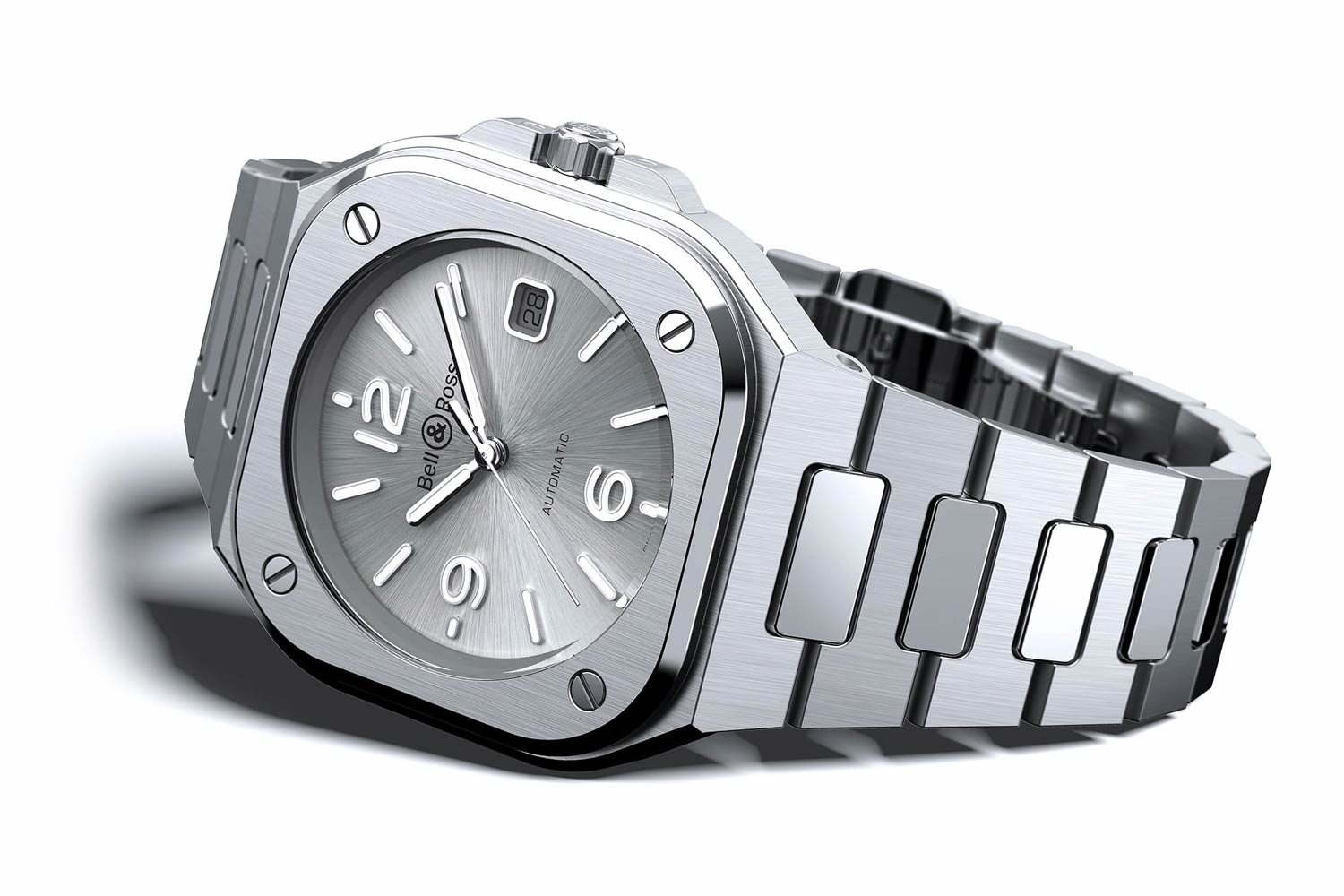
Bell & Ross released the BR 05 in 2019, and whilst it wasn’t technically the first integrated bracelet sports watch from the brand, it was a new commitment to join the fray in this segment of the market.

Introduced this year, the BR 05 Skeleton NIGHTLUM with its blacked-out movement and seemingly floating luminous hour markers and hands is one of the coolest watches from Bell & Ross.
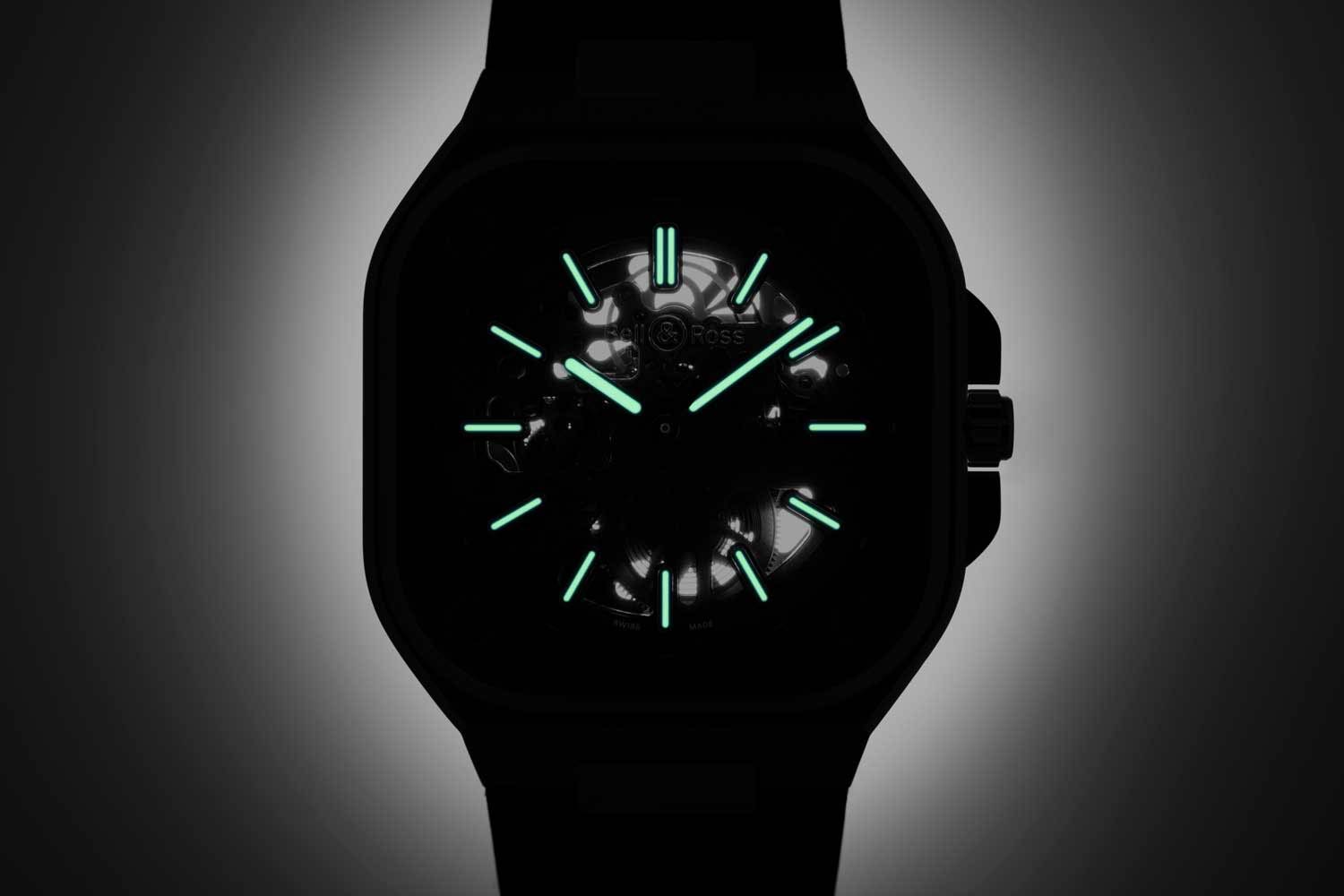
The metallic indexes, hour and minute hands in the NIGHTLUM are filled with strong green C5 SuperLuminova.
A skeleton version first appeared in 2019 in gray, followed by a blue skeleton BR 05 in 2020 alongside a chronograph. Earlier this year, arguably the coolest of the bunch was unveiled — the BR 05 Skeleton NIGHTLUM with its blacked-out movement with seemingly floating luminous hour markers and hands. Bruno Belamich is, however, fully aware of the influence that the BR 05’s forebears have had on its appearance: “The case and bracelet form one unit. This type of design harks back to a category of watches which appeared in the 1970s, and when infused with Bell & Ross’s signature identity, the resulting graphic style is both striking and modern.”
Last in this roundup is the Moser Streamliner. H. Moser & Cie. is a name that actually dates back to 1828, when the brand was founded by Heinrich Moser in Russia. In the mid 20th century, the company had a short-lived tenure that became victim to the Quartz Crisis before being revived as the company we know today in 2005 by Heinrich Moser’s great-grandson, Roger Nicholas Balsiger, and Dr. Jürgen Lange. A year later the brand won the Geneva Watchmaking Grand Prix (GPHG) with the Moser Perpetual 1 and later in the decade came the Henry with double hairspring. In 2020 Moser launched the Streamliner, which very obviously does “what it says on the tin.” Unlike many integrated bracelet watches that by nature are quite angular, the Streamliner is soft and harmonious and, well, streamlined thanks to the brand deciding against a bezel.
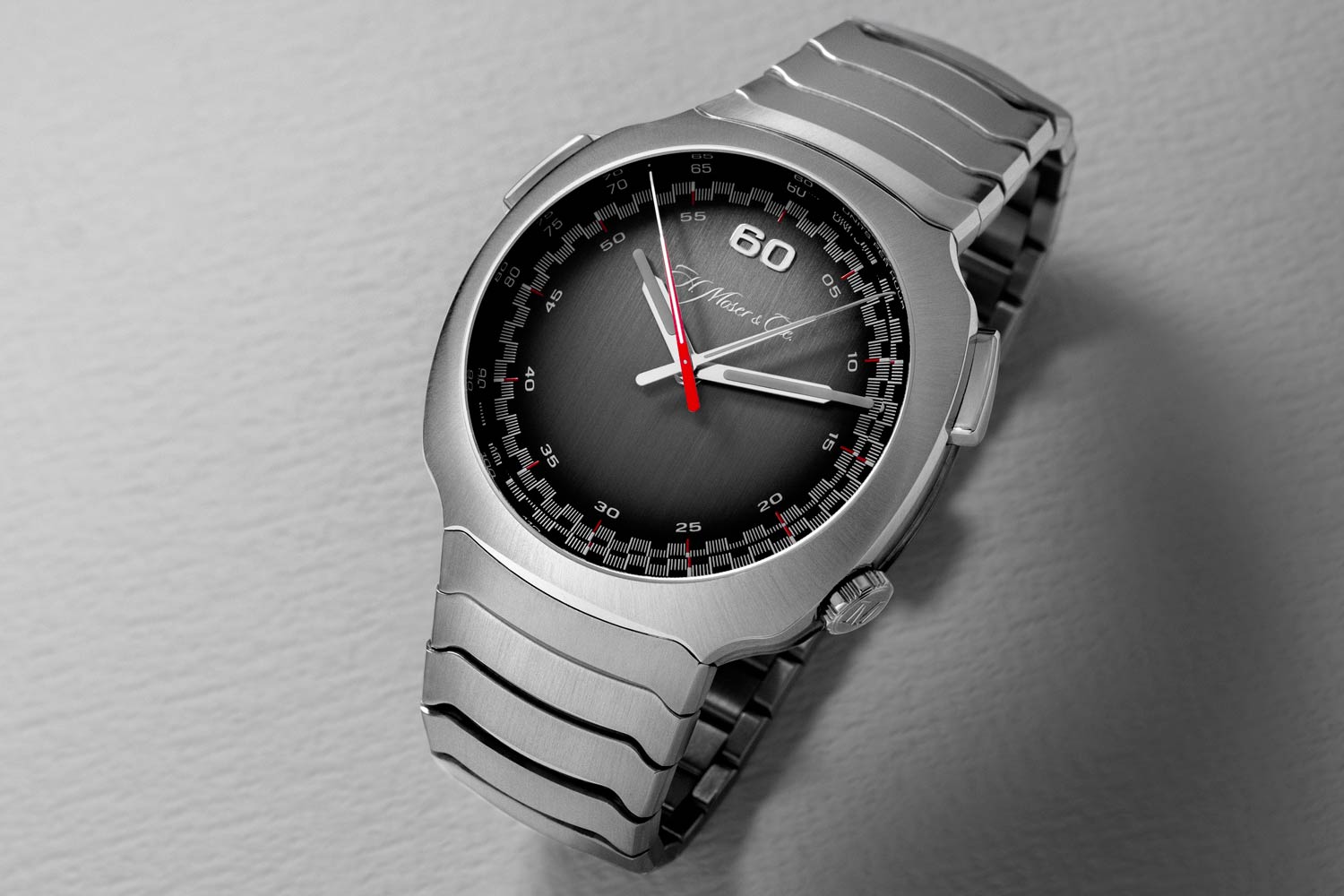
H. Moser & Cie Streamliner Flyback Chronograph Automatic
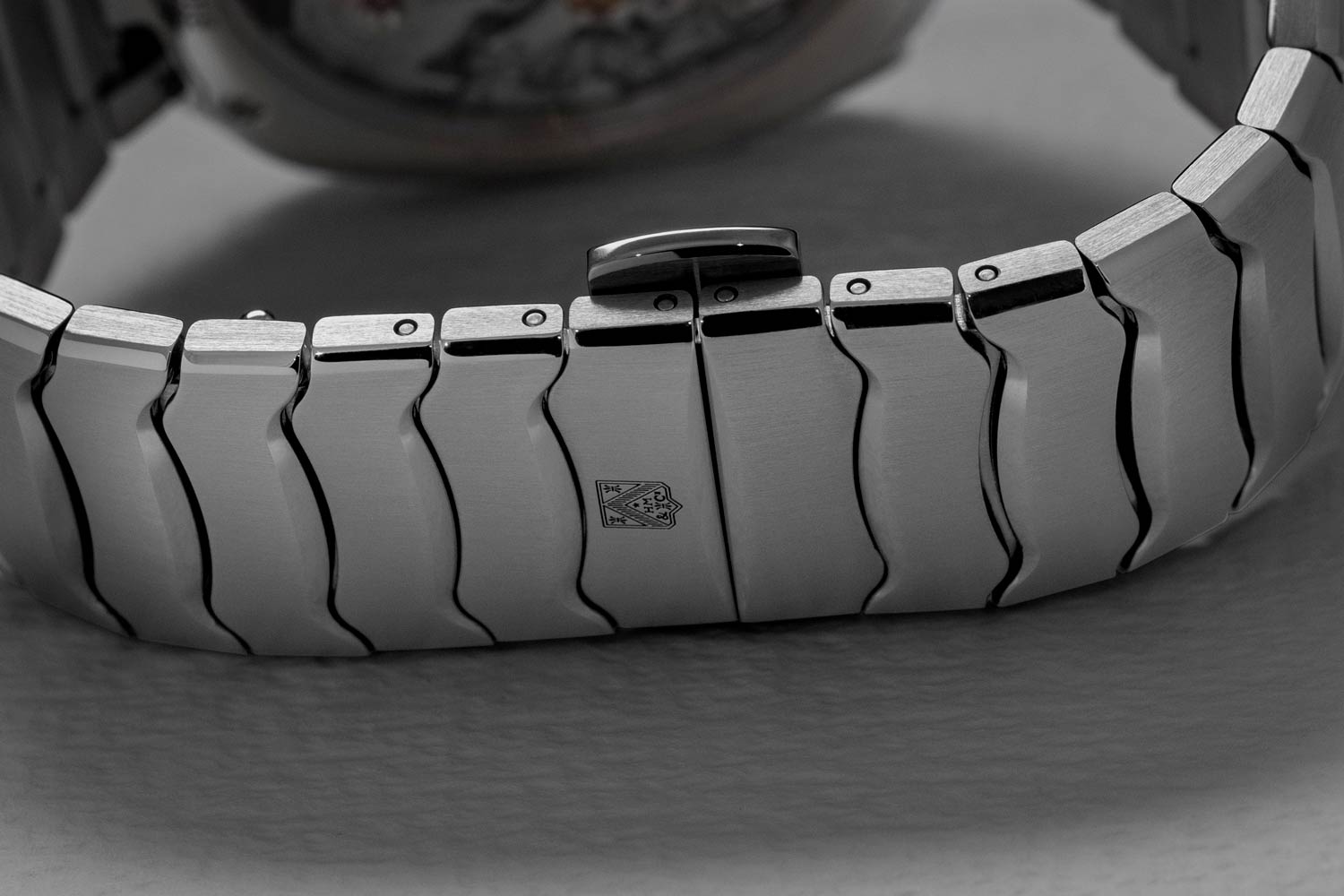
The H. Moser & Cie Streamliner Flyback Chronograph Automatic is unlike many integrated bracelet watches — it eschews the use of a bezel and presents a soft and harmonious aesthetic
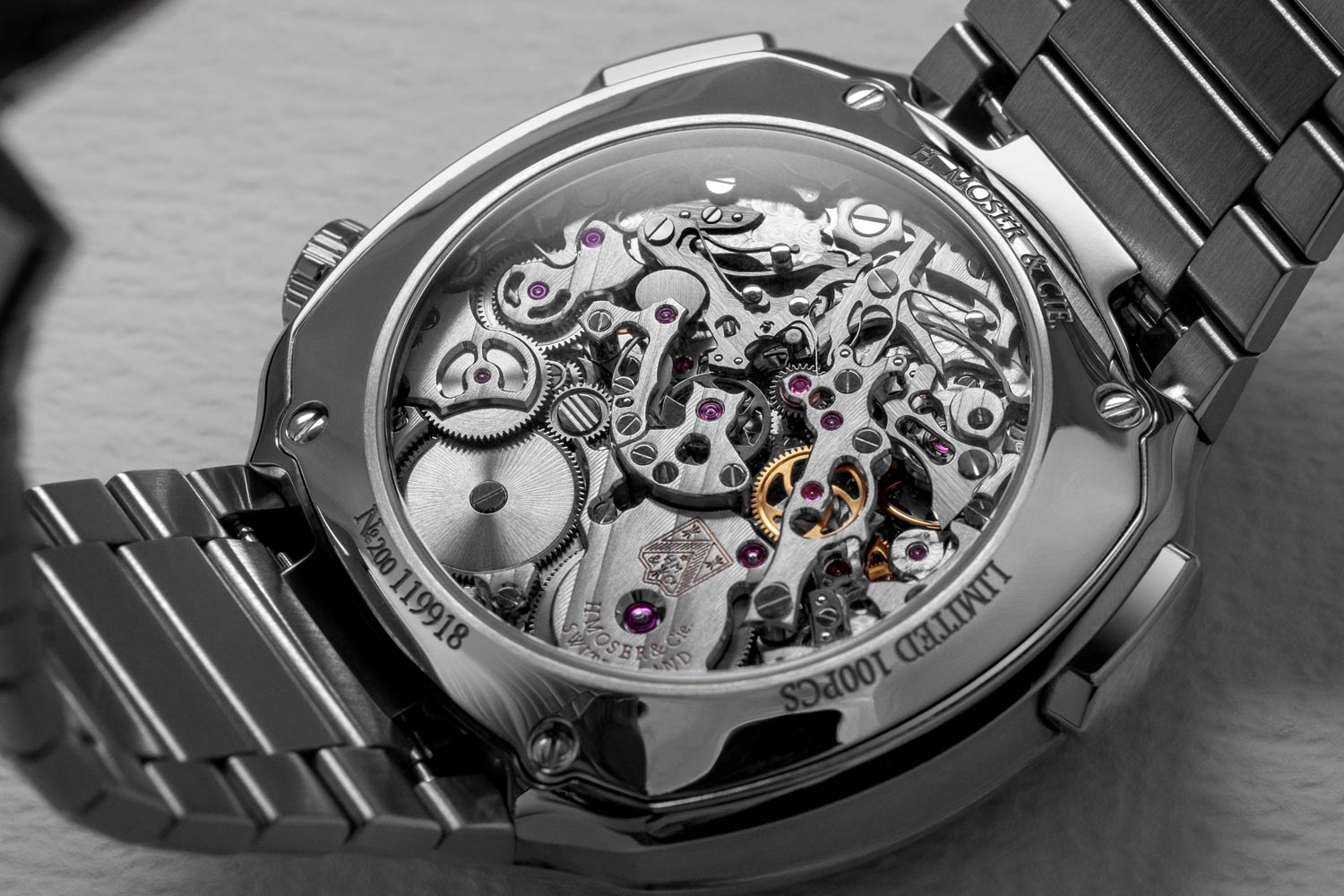
The H. Moser & Cie Streamliner Flyback Chronograph Automatic is unlike many integrated bracelet watches — it eschews the use of a bezel and presents a soft and harmonious aesthetic











